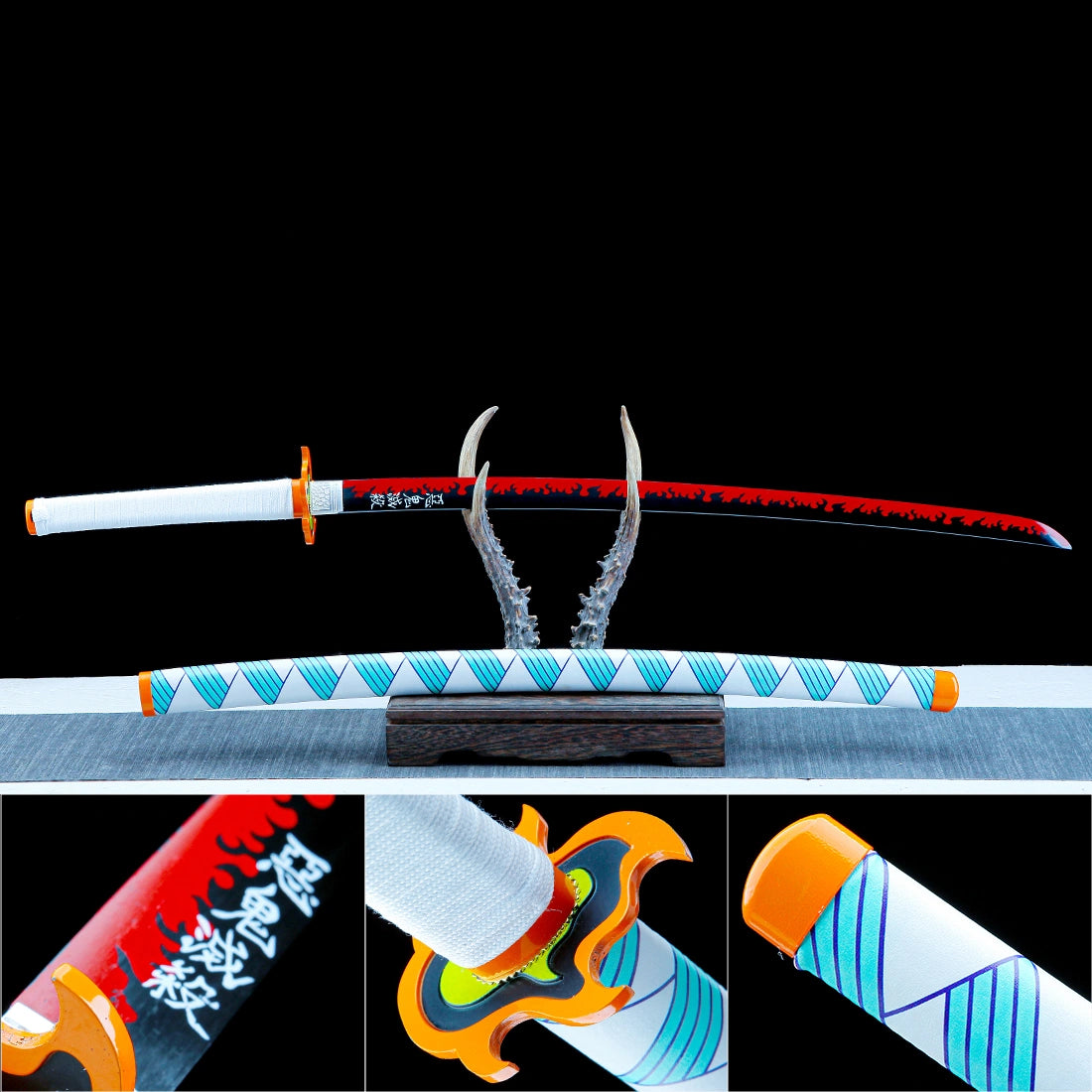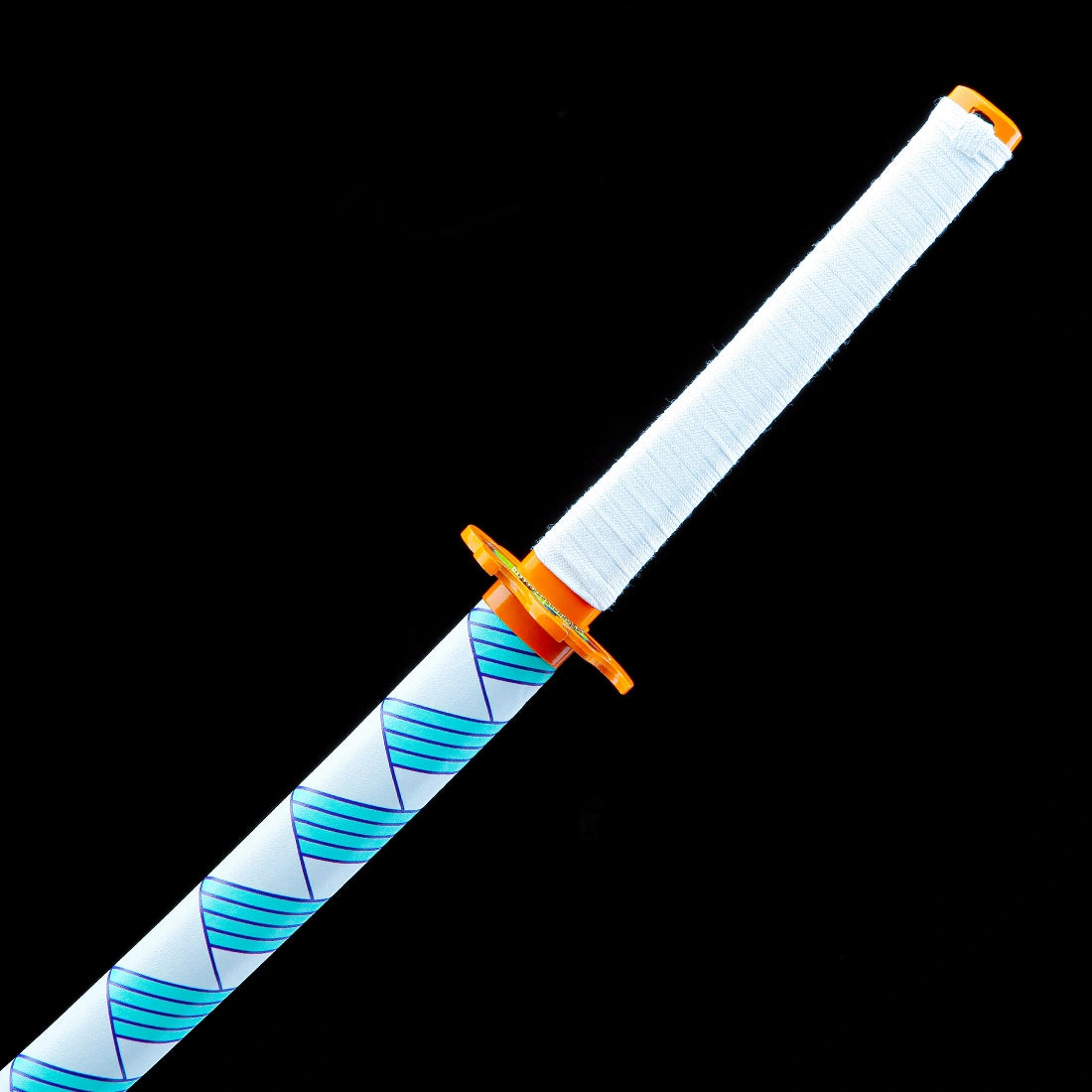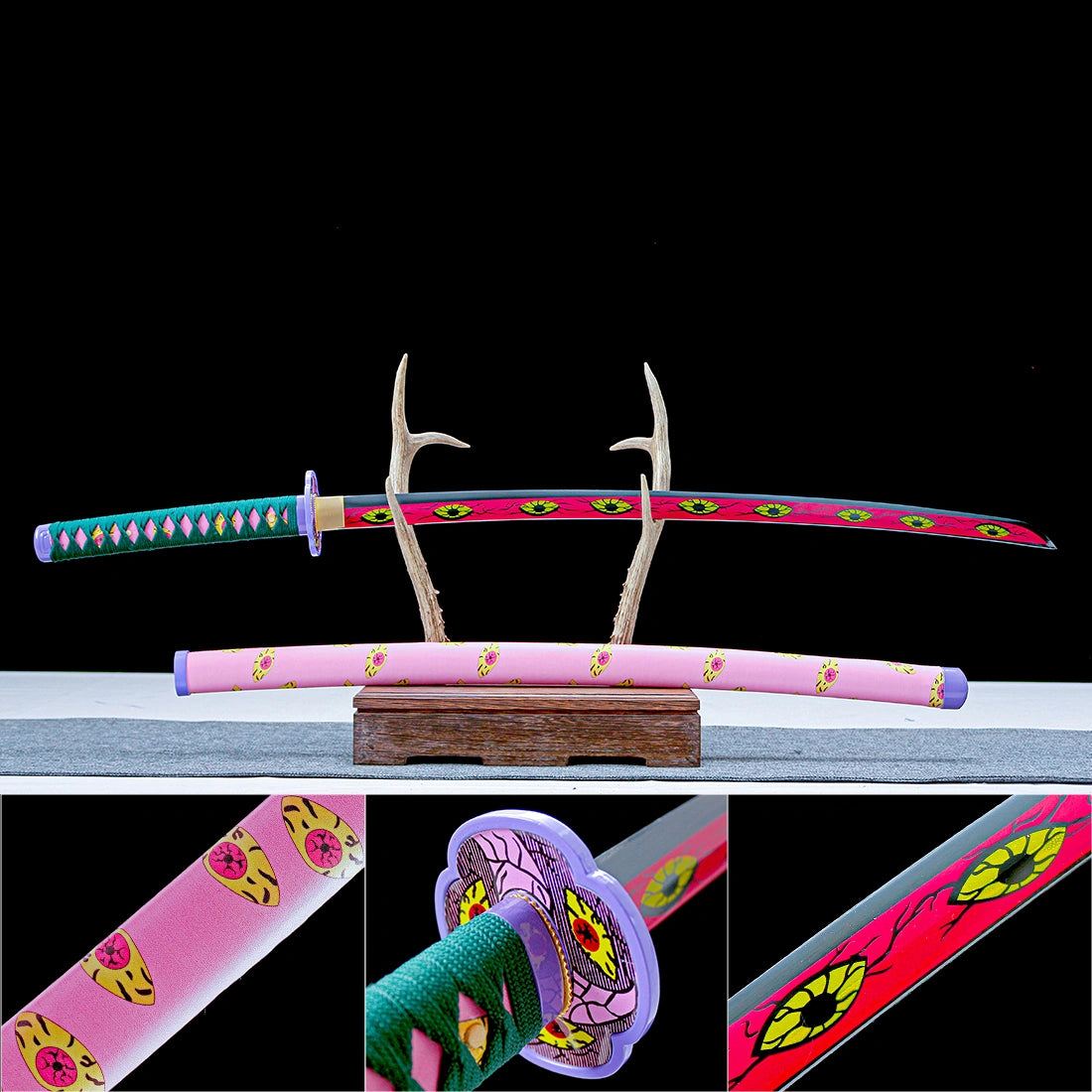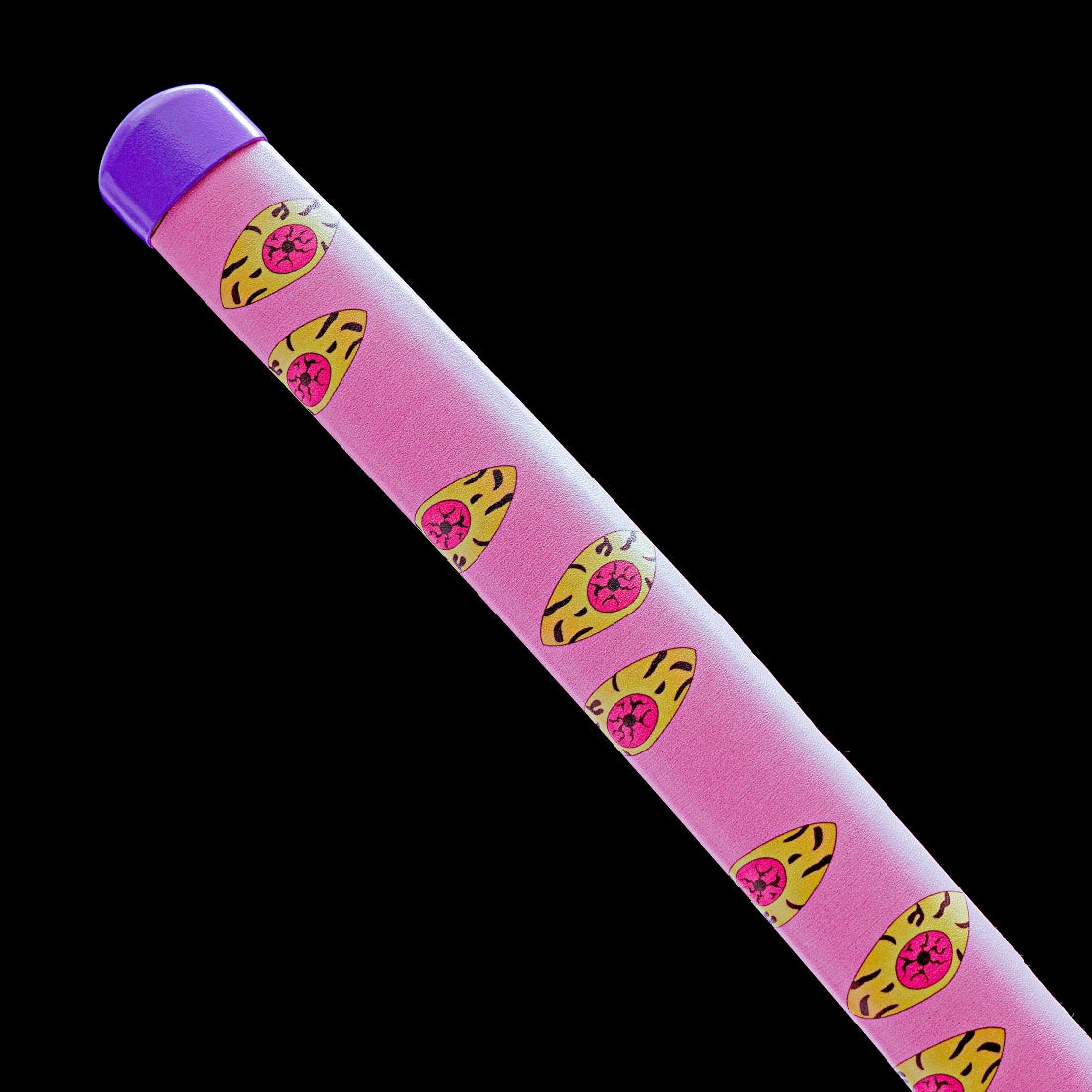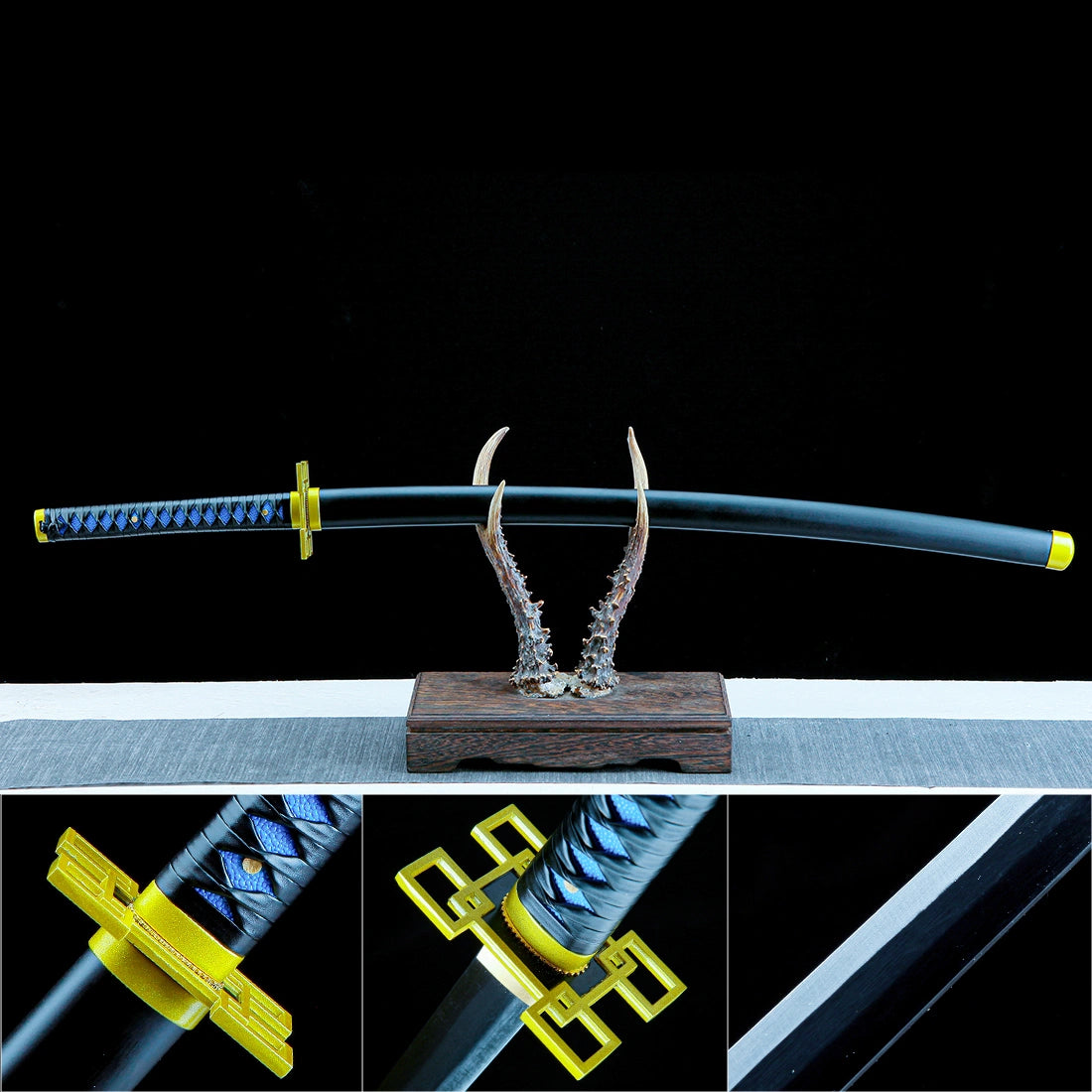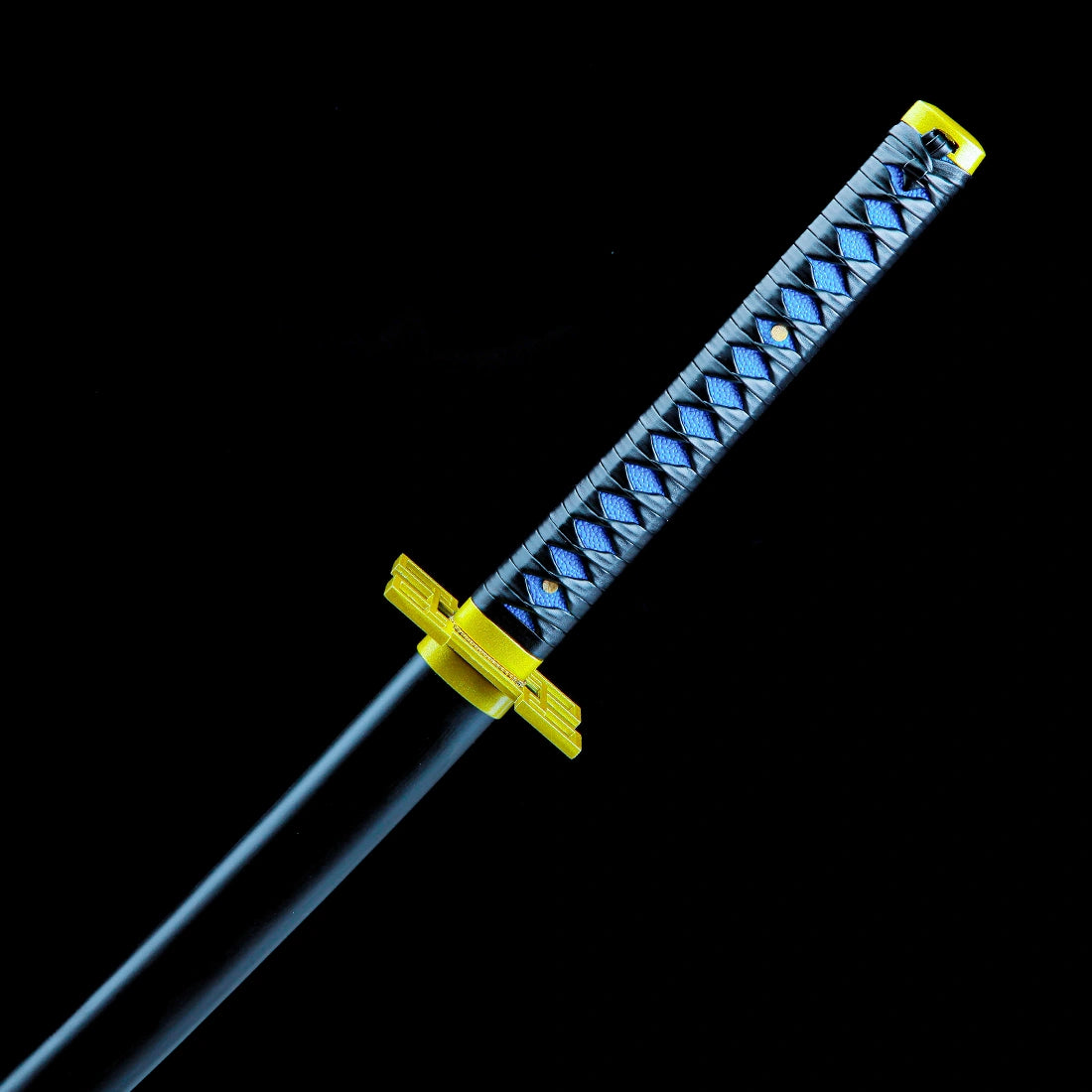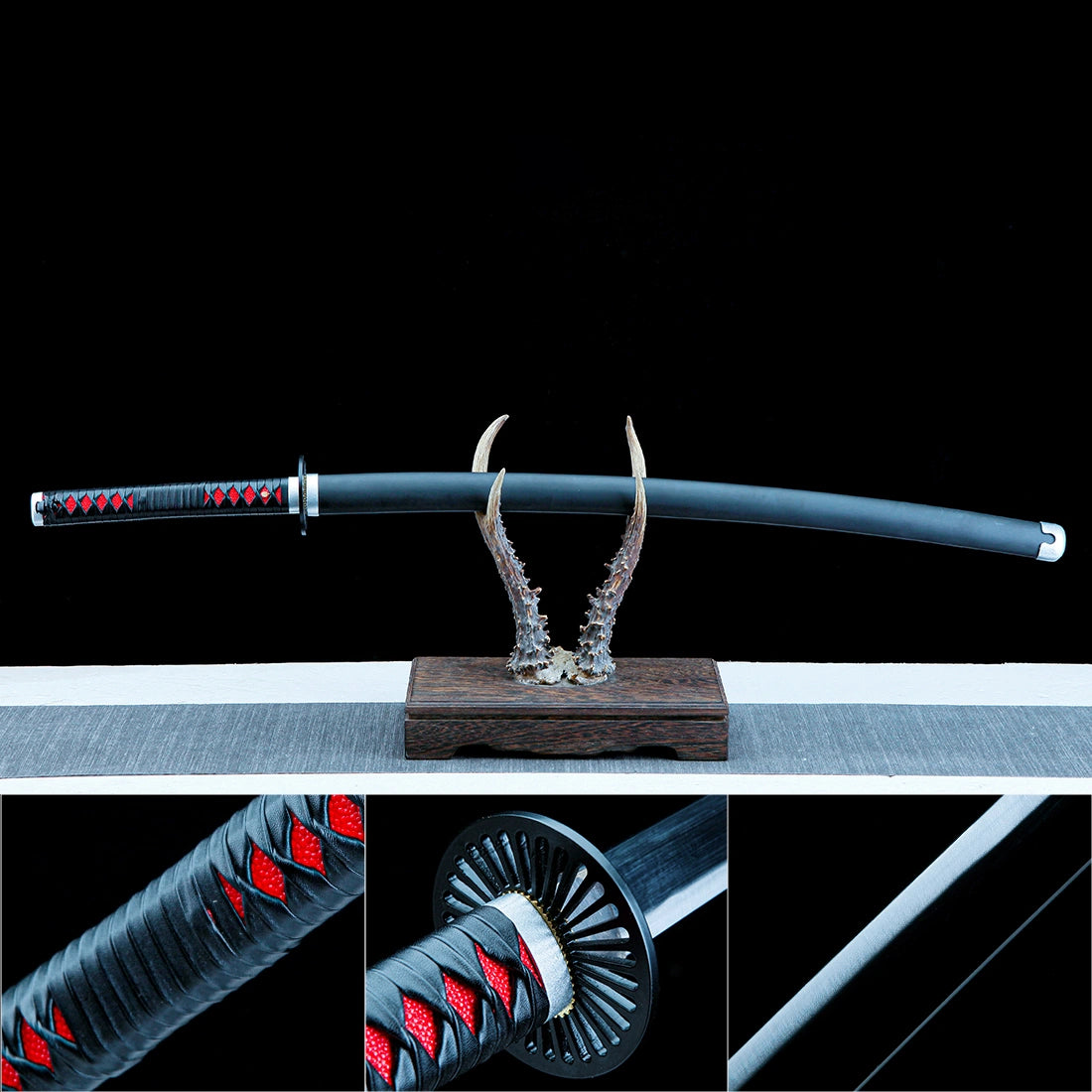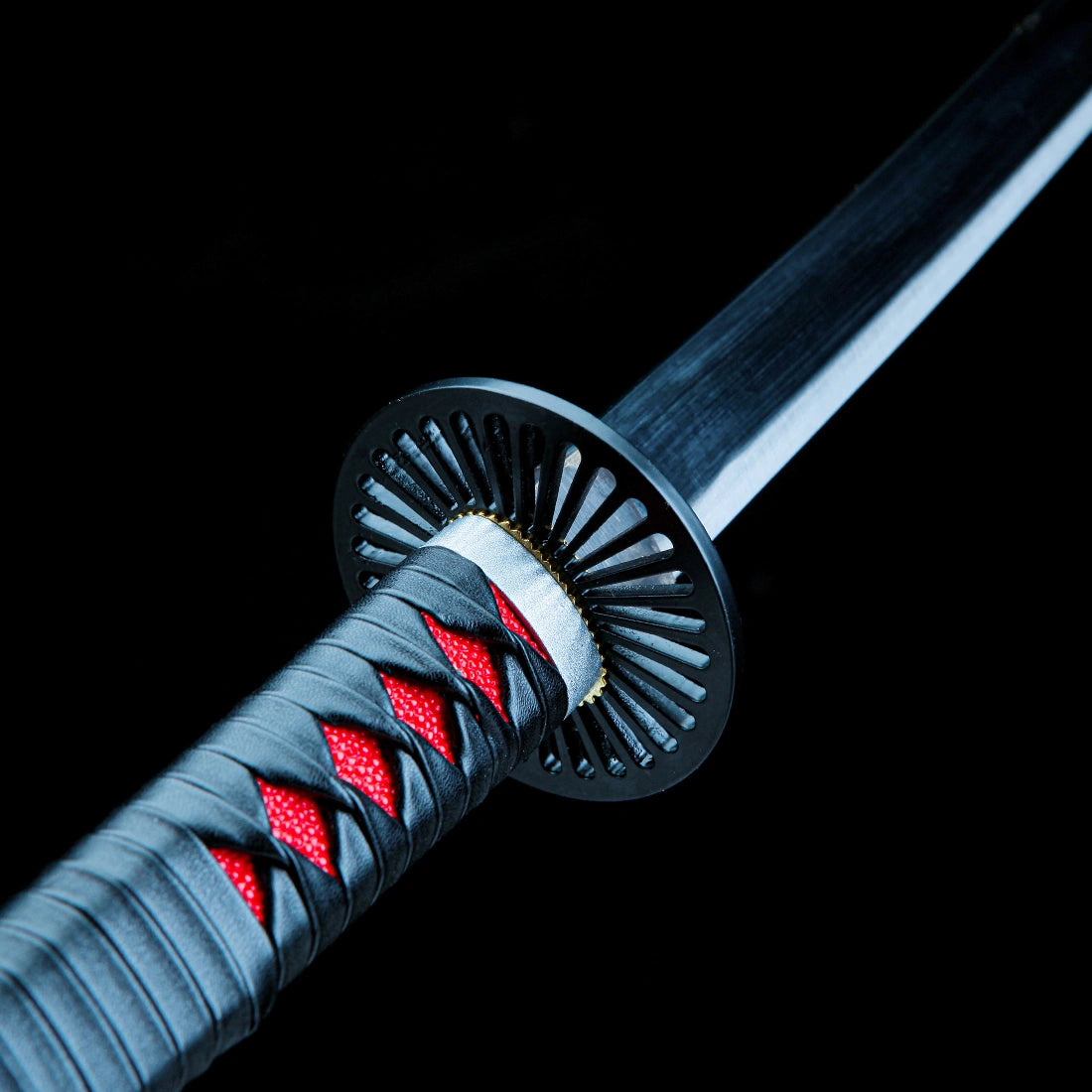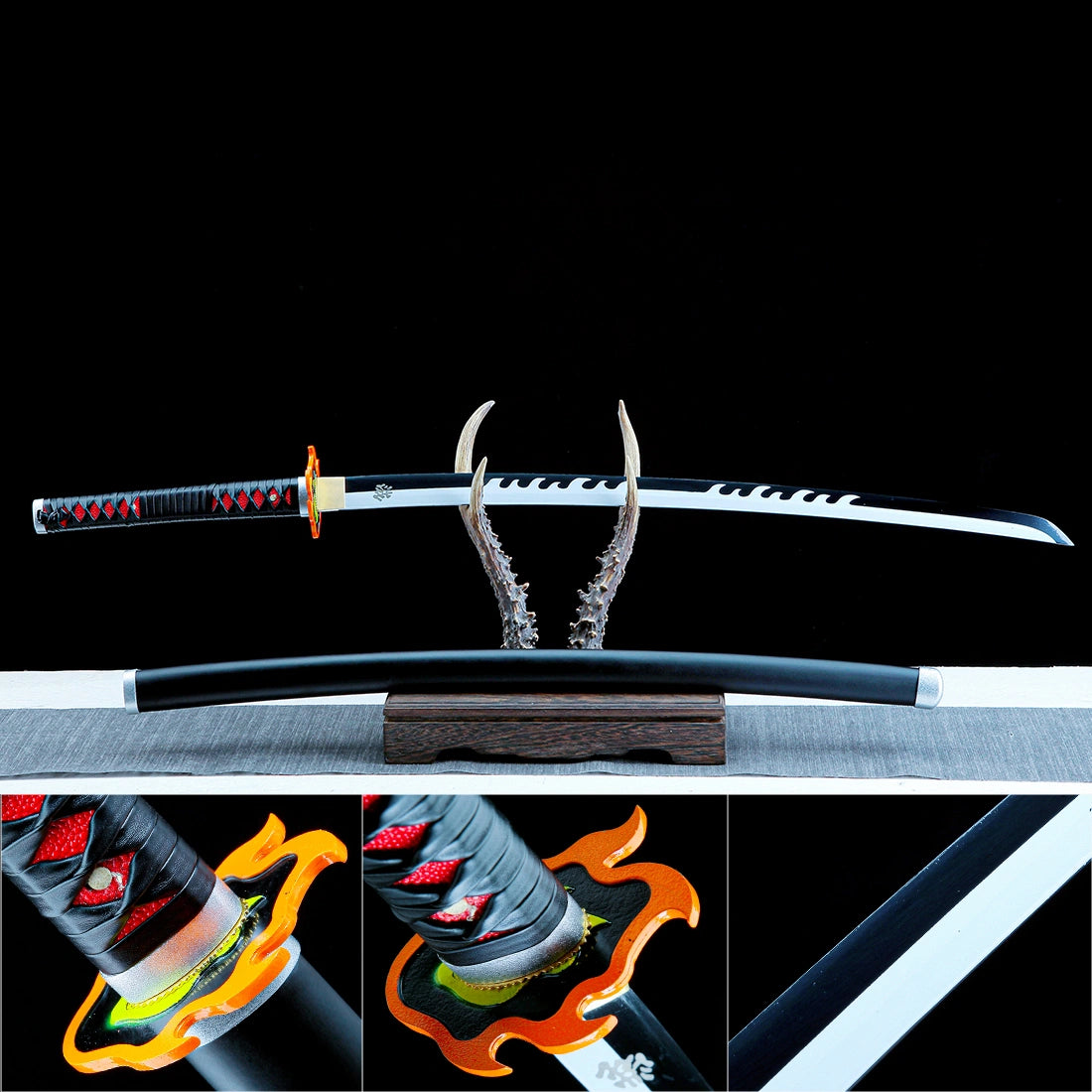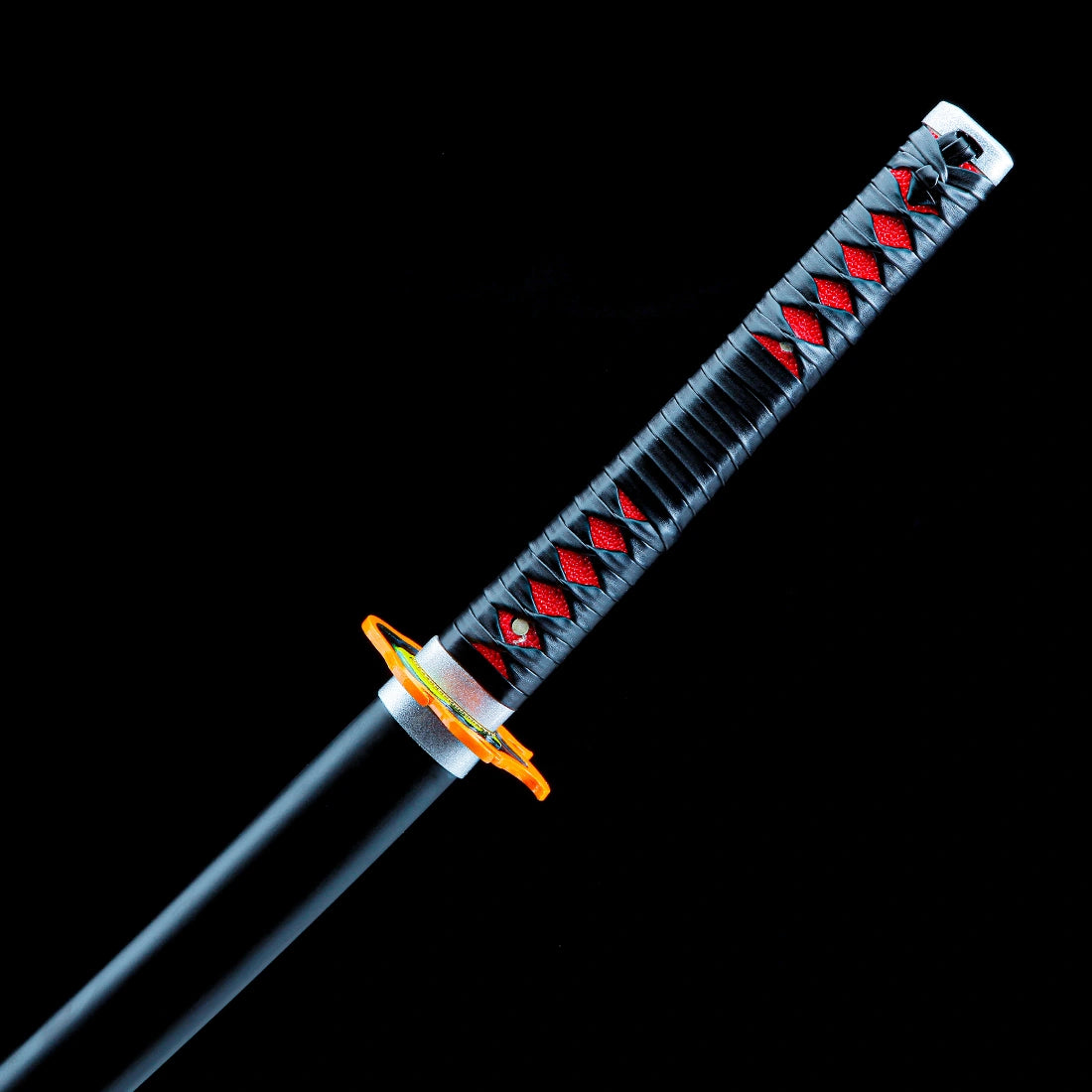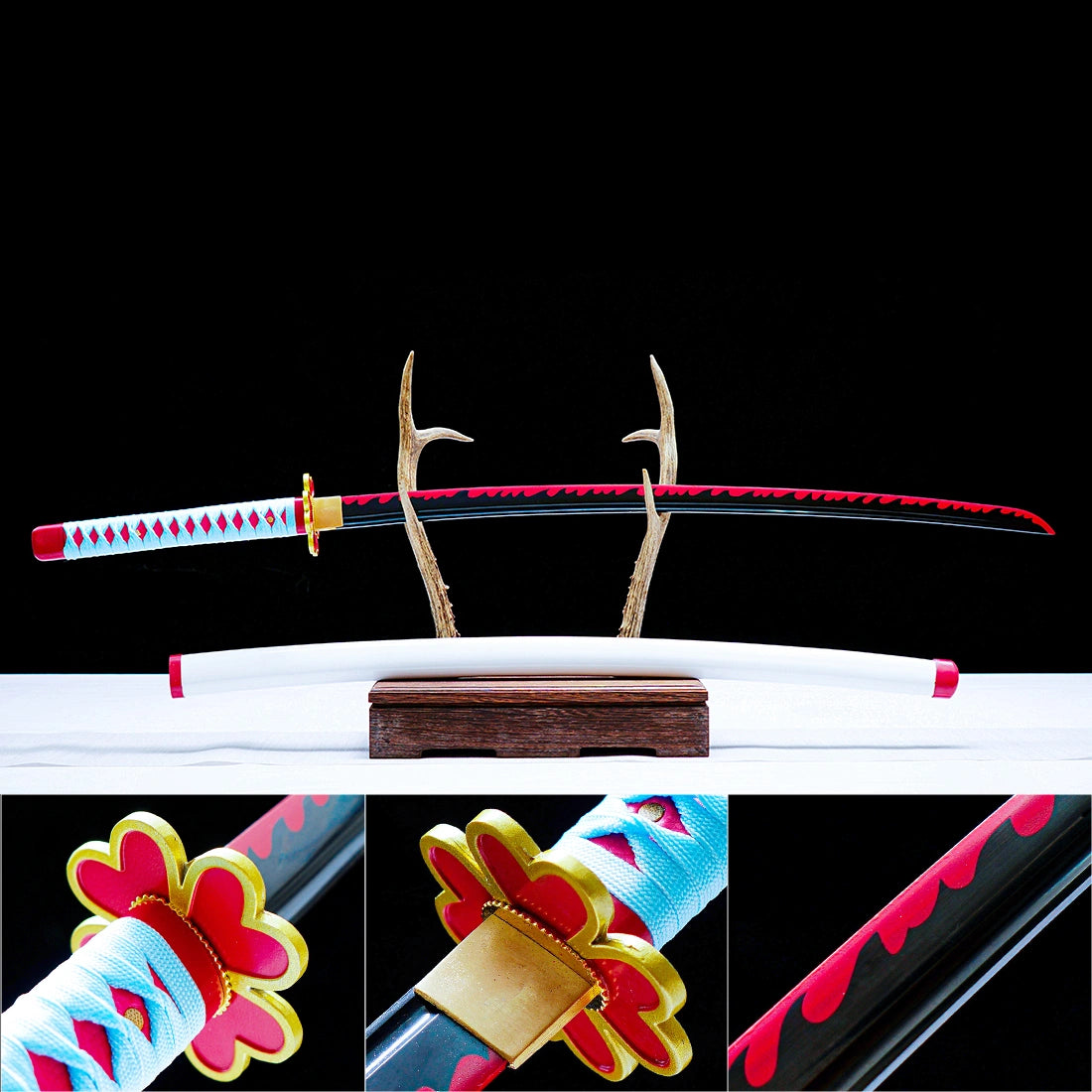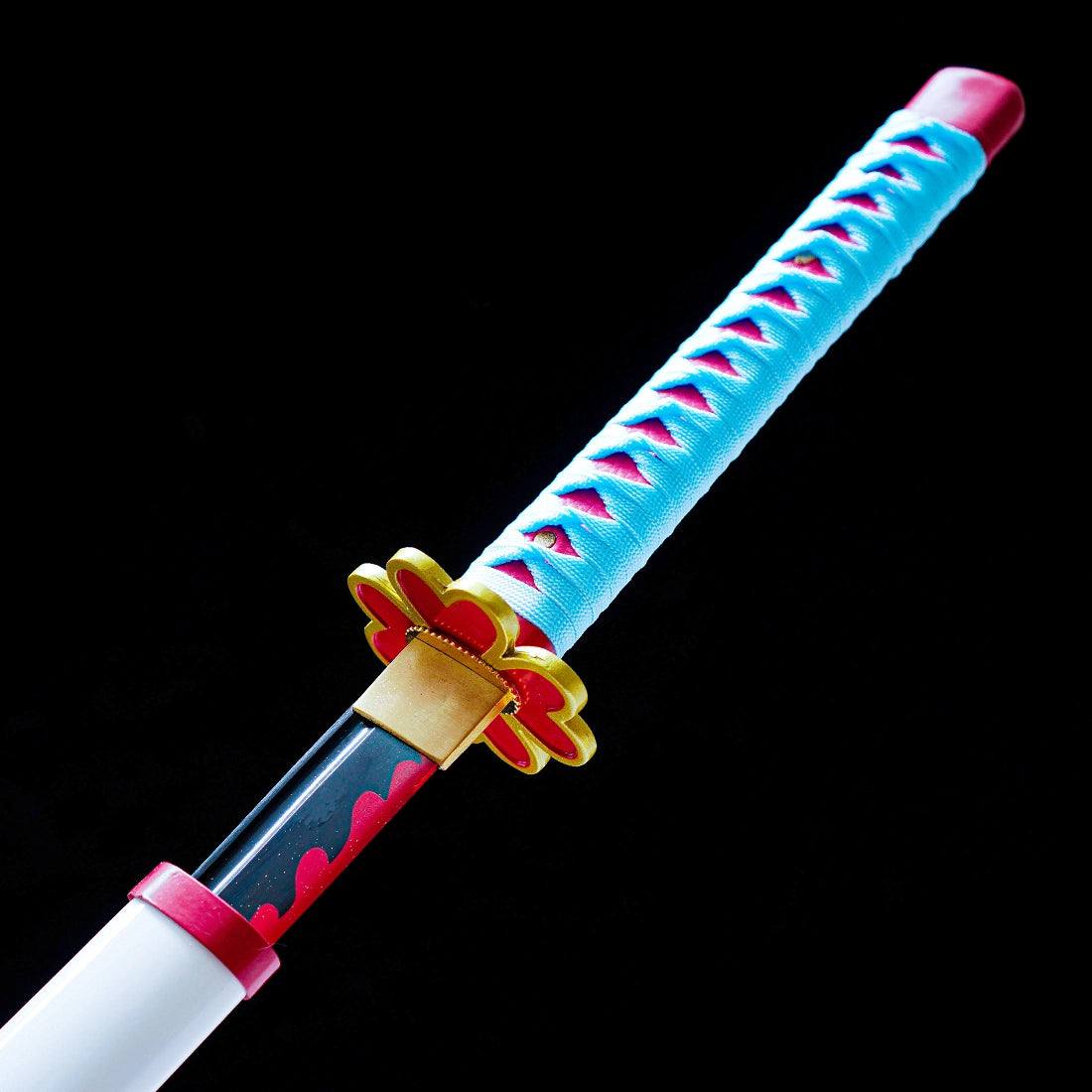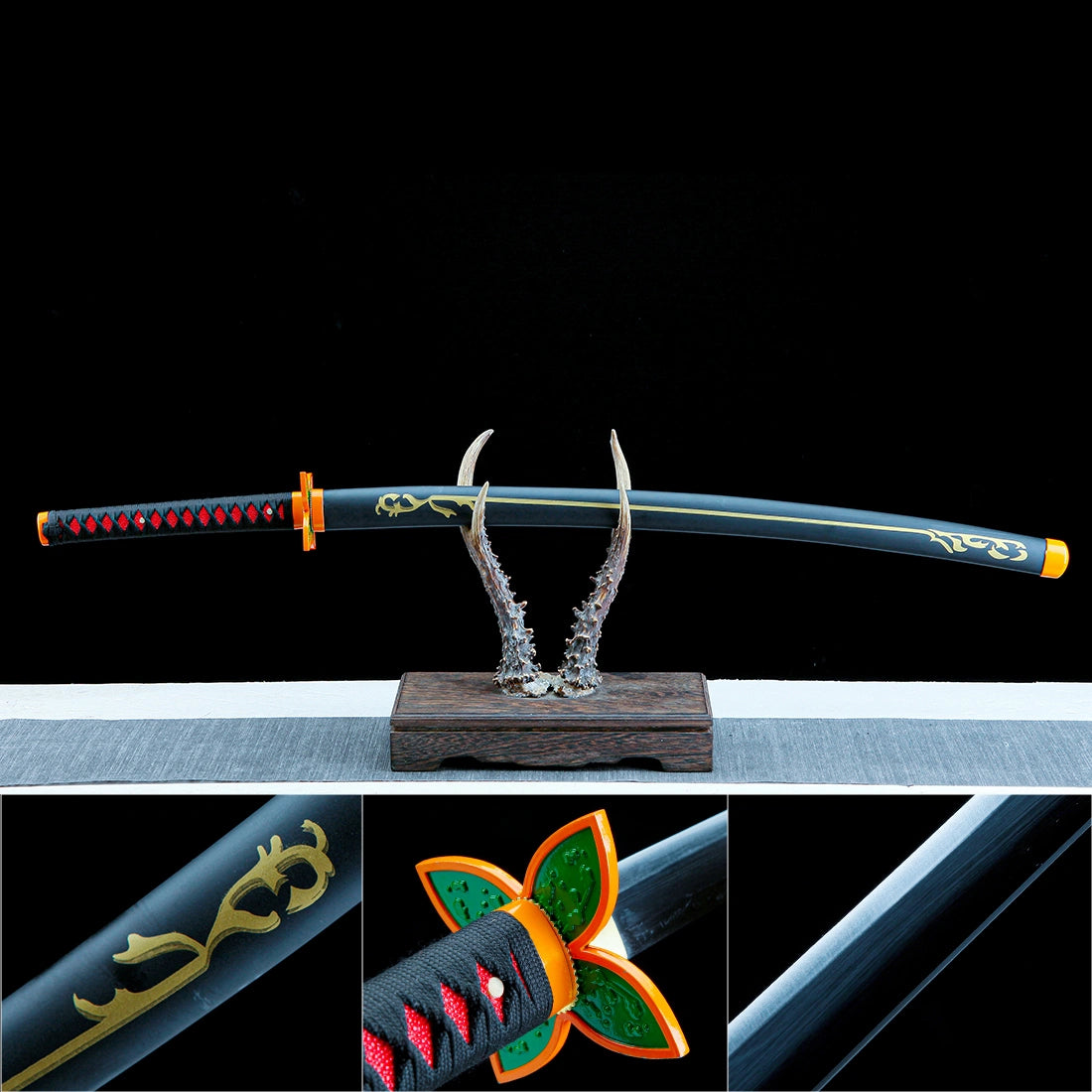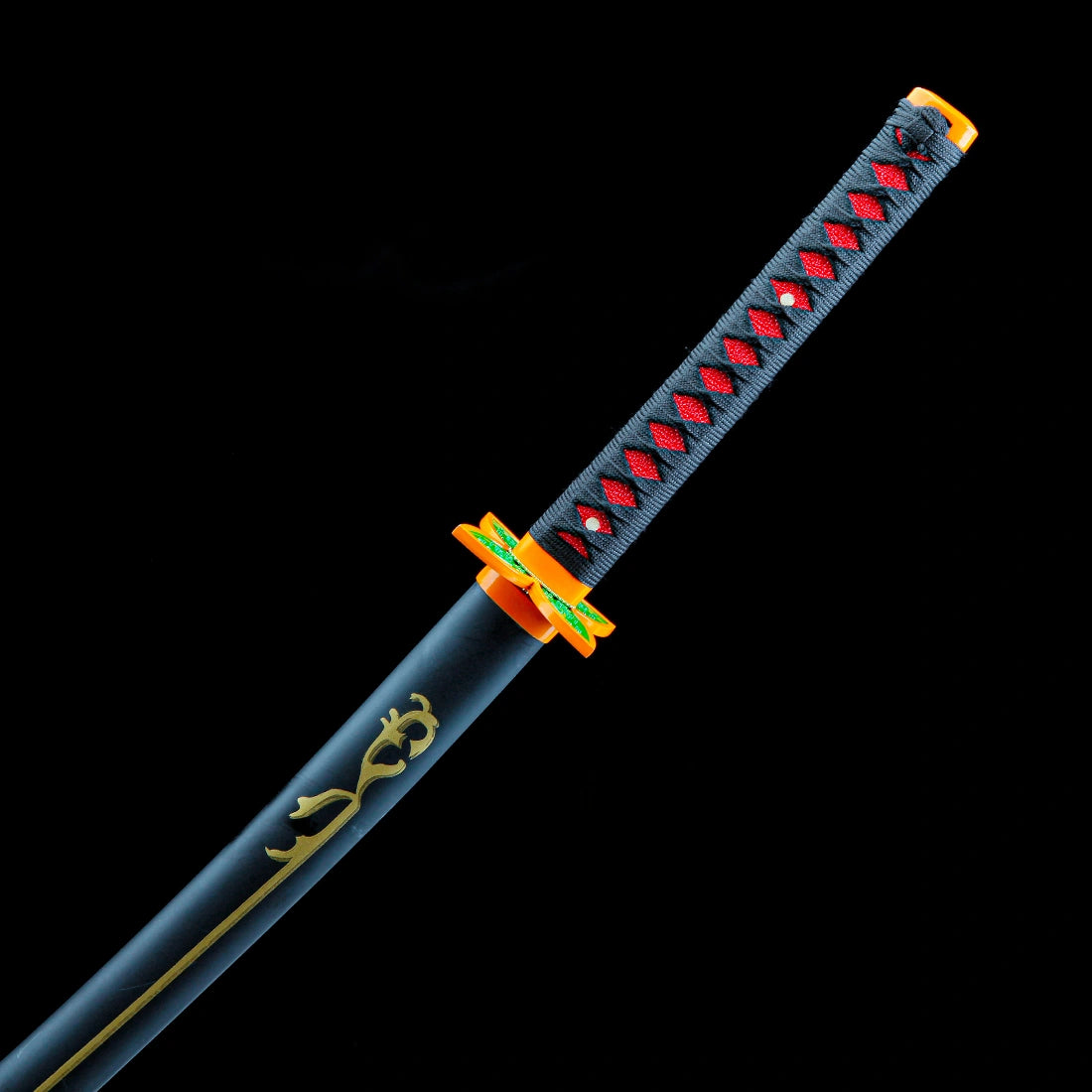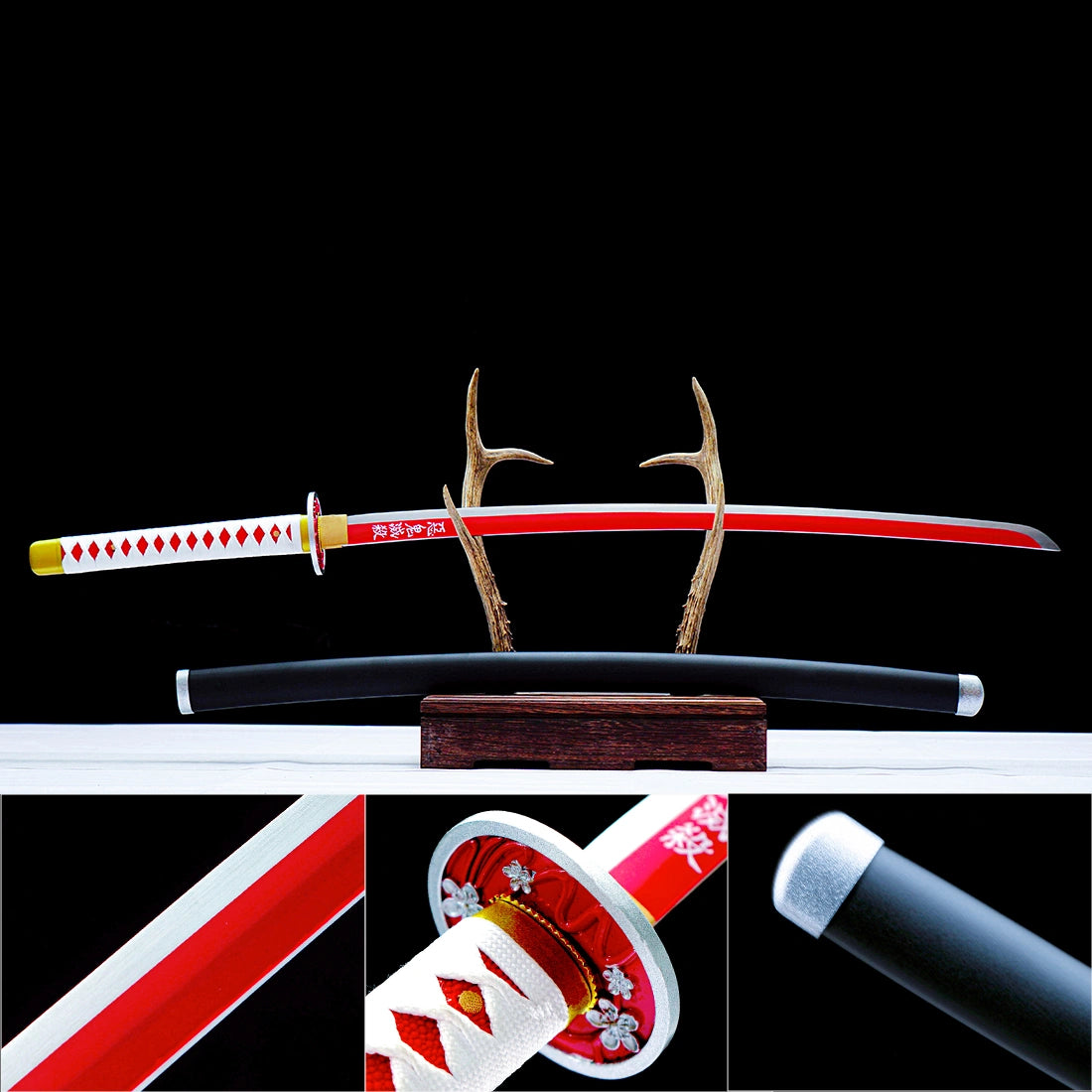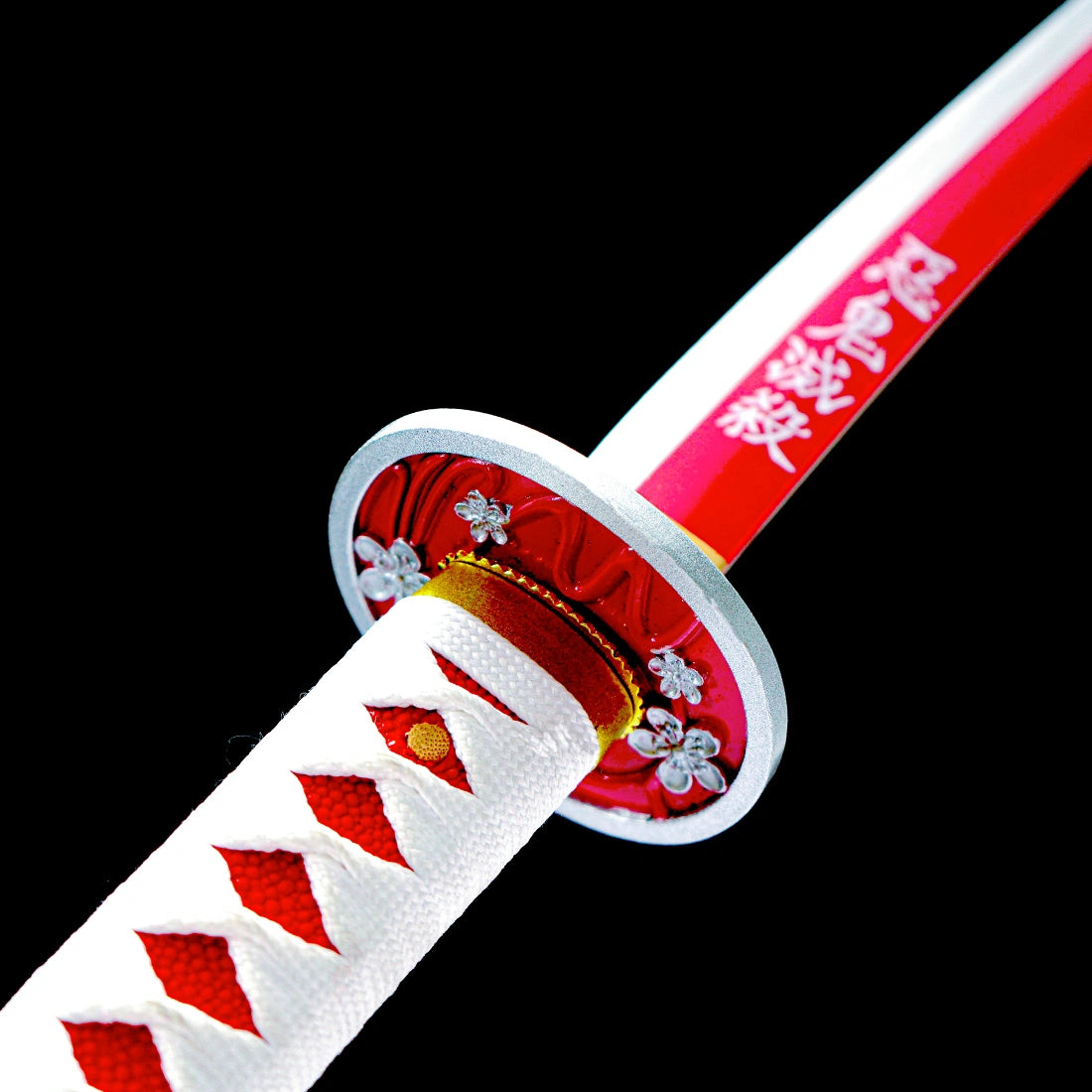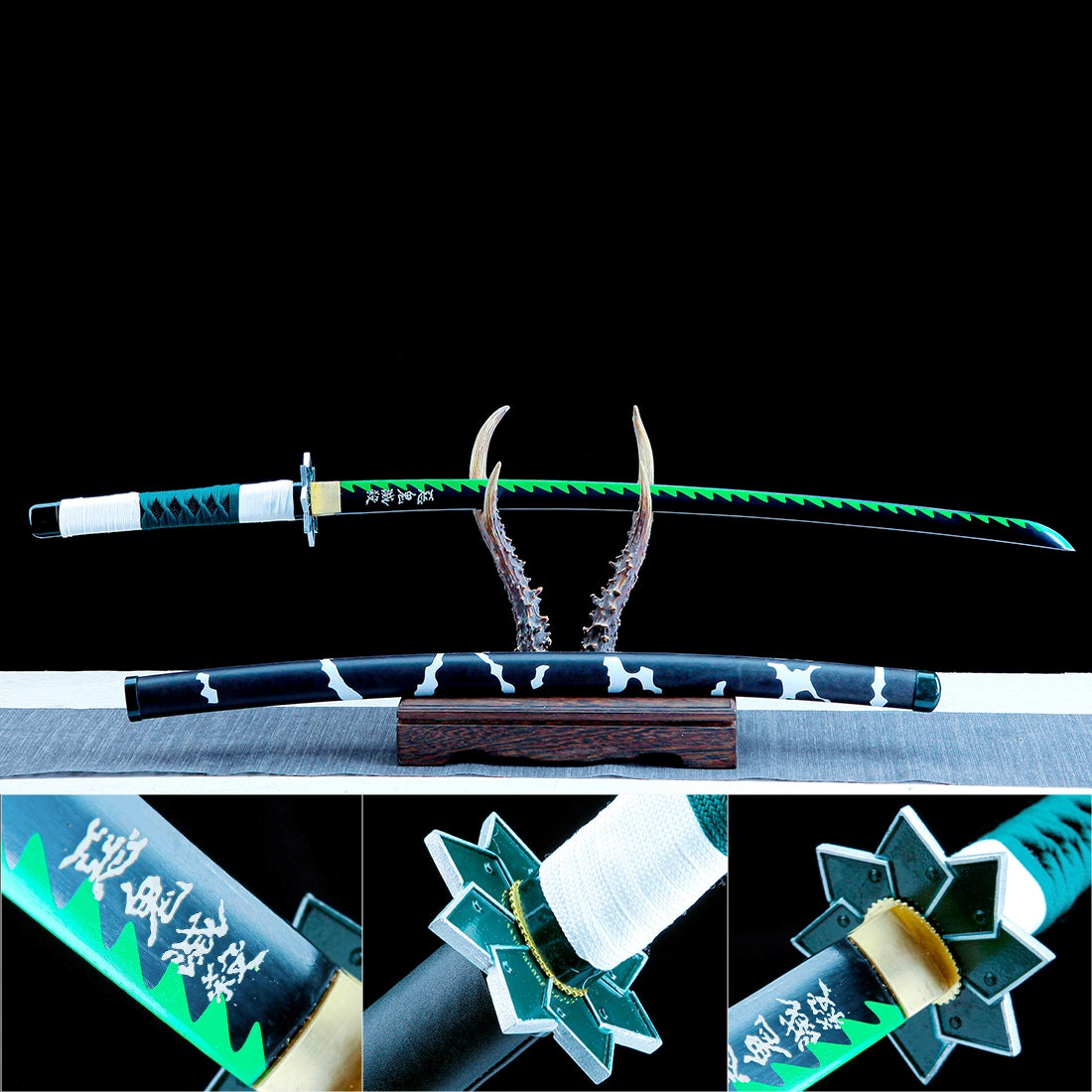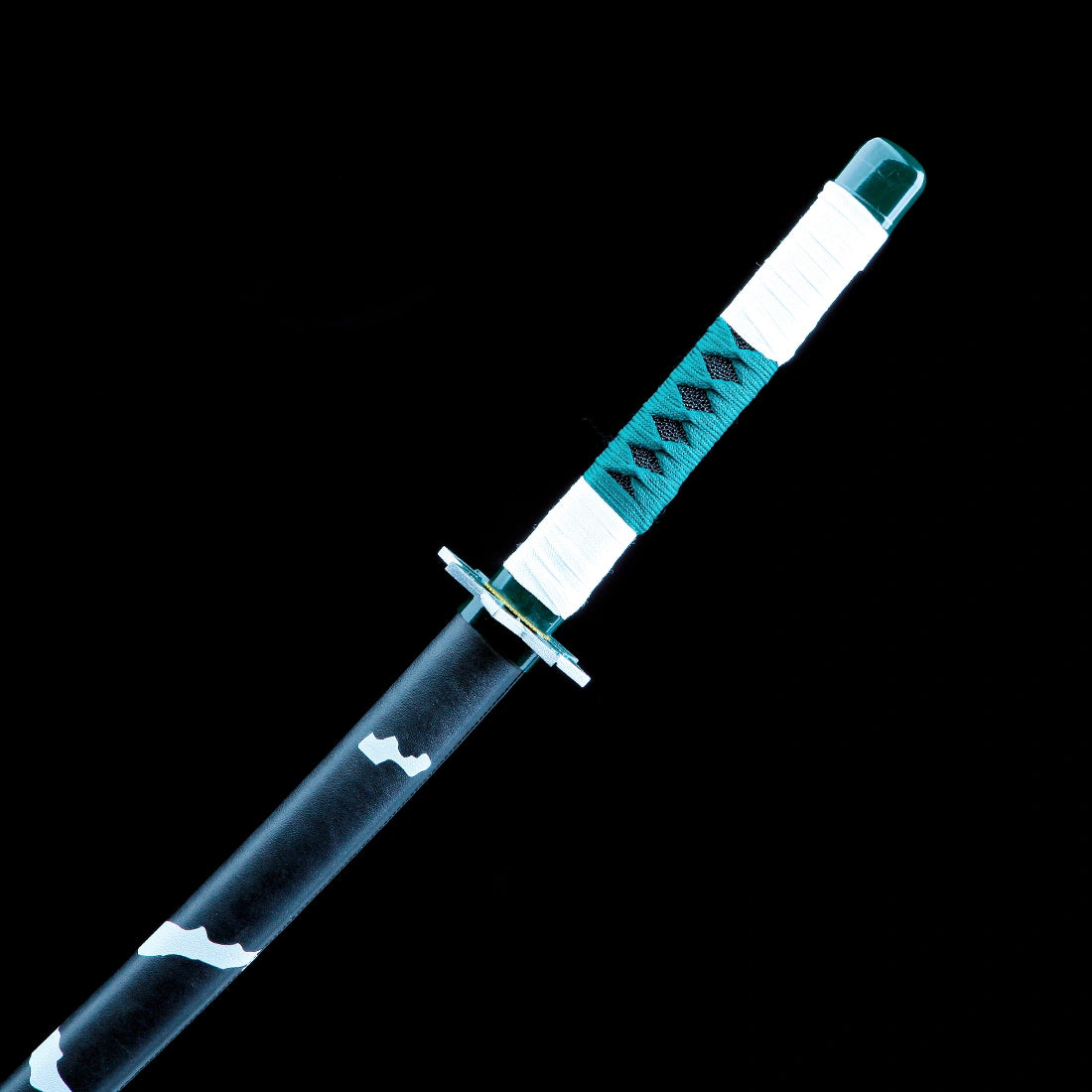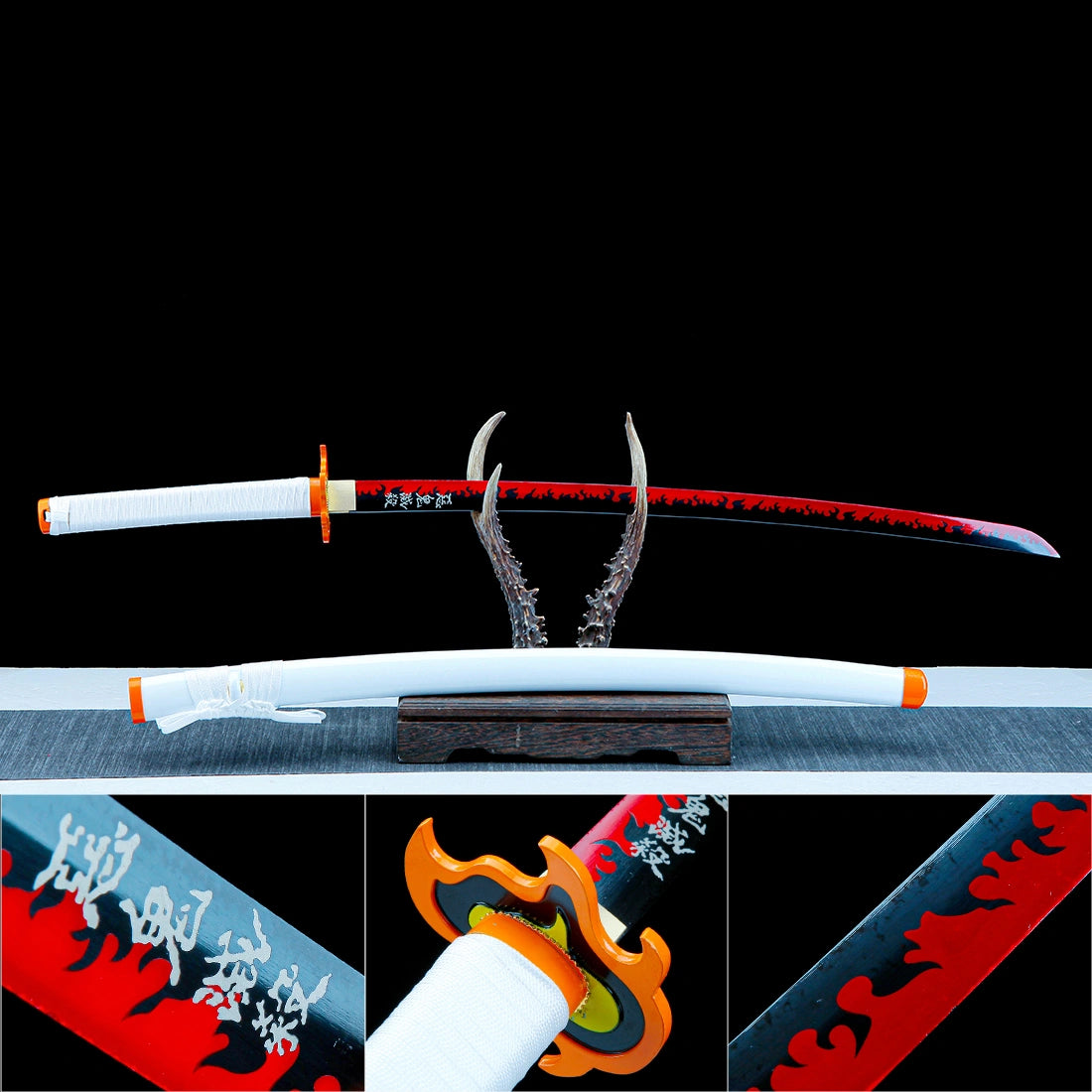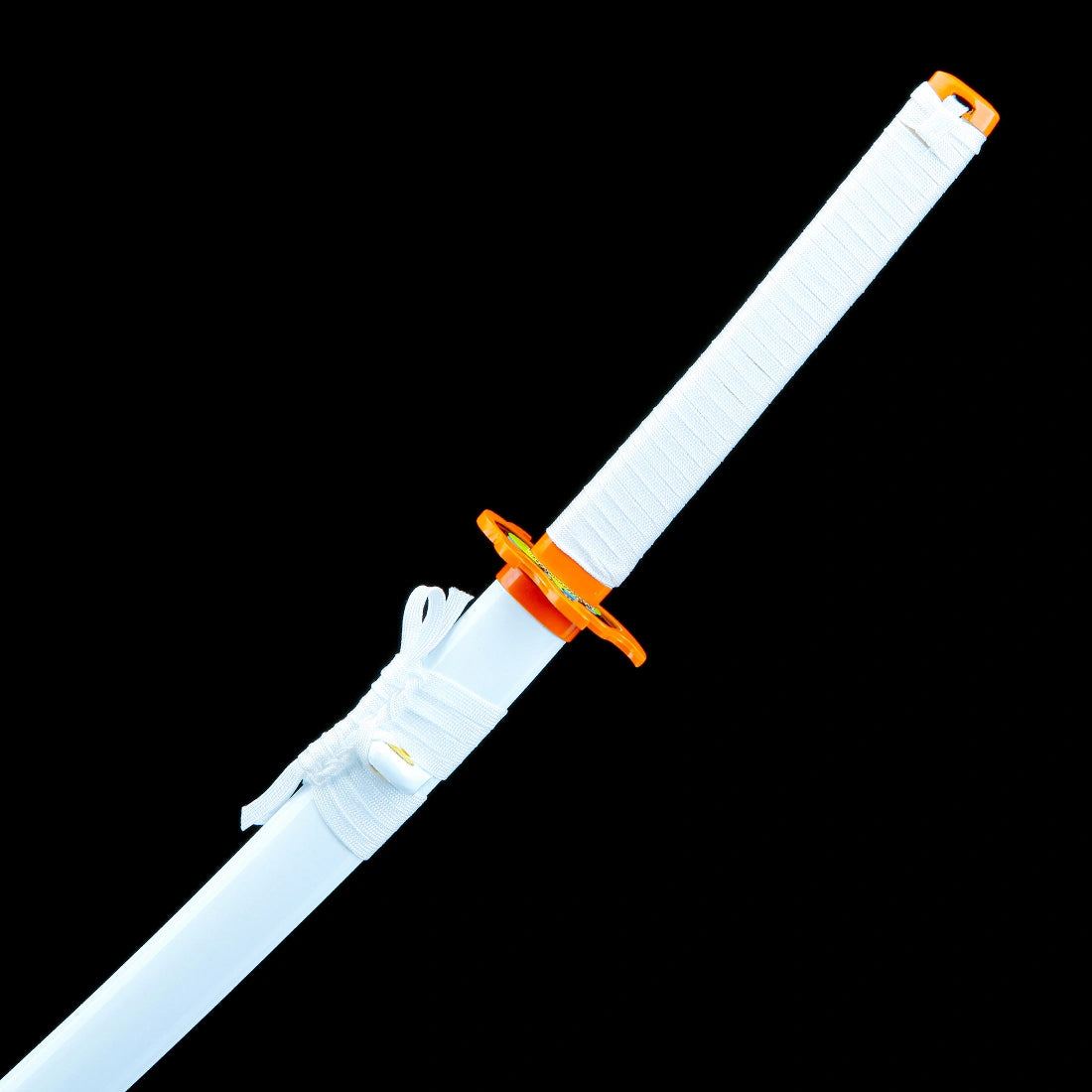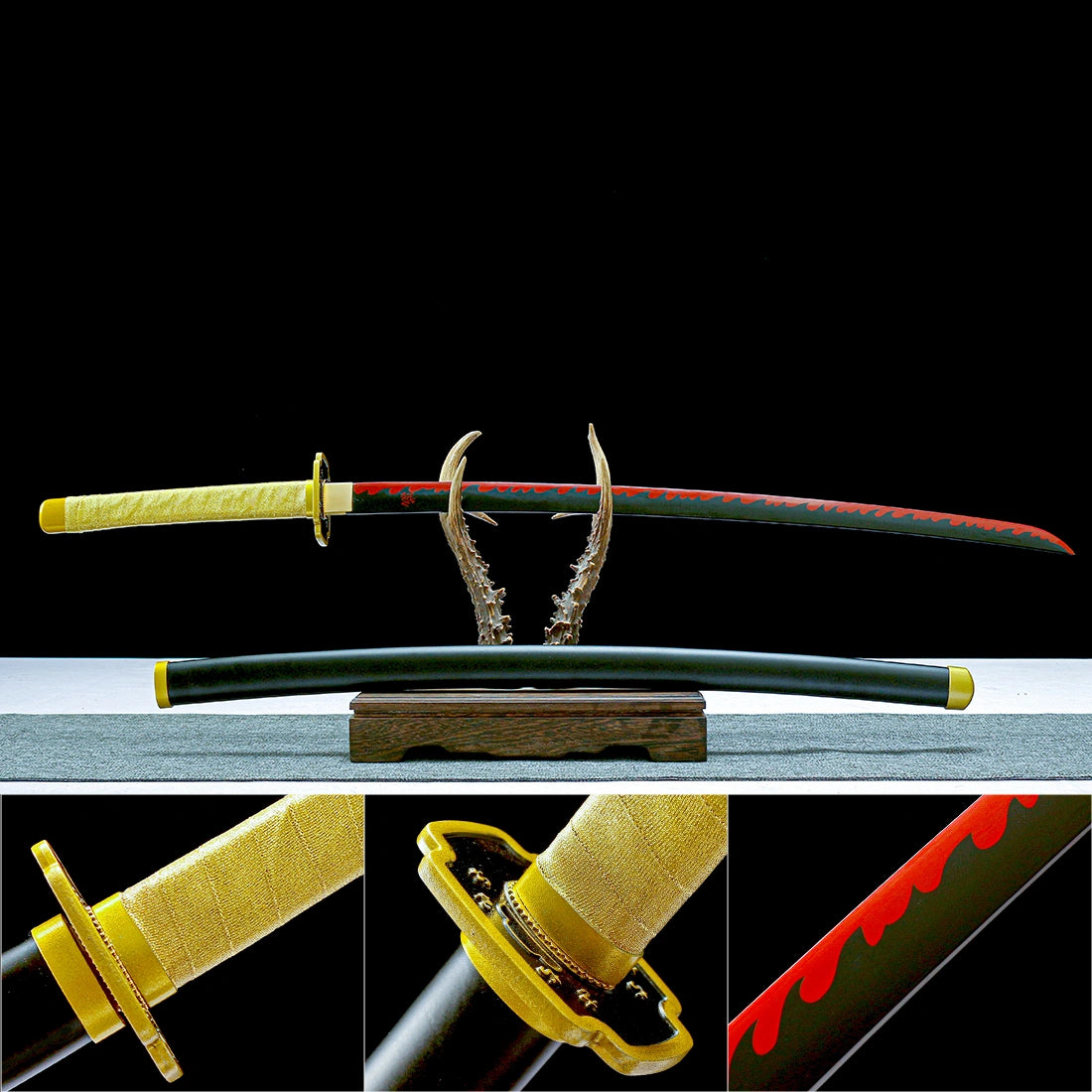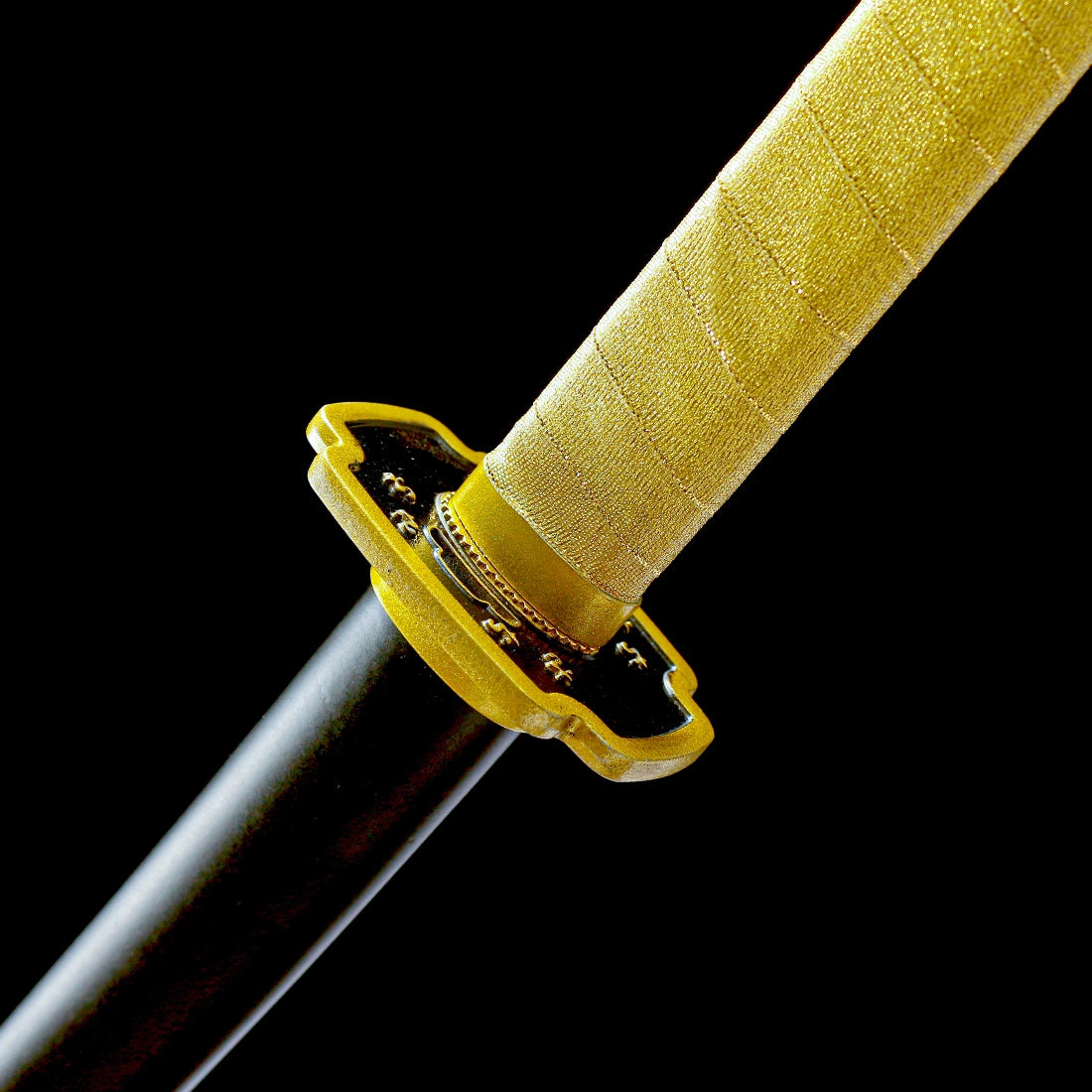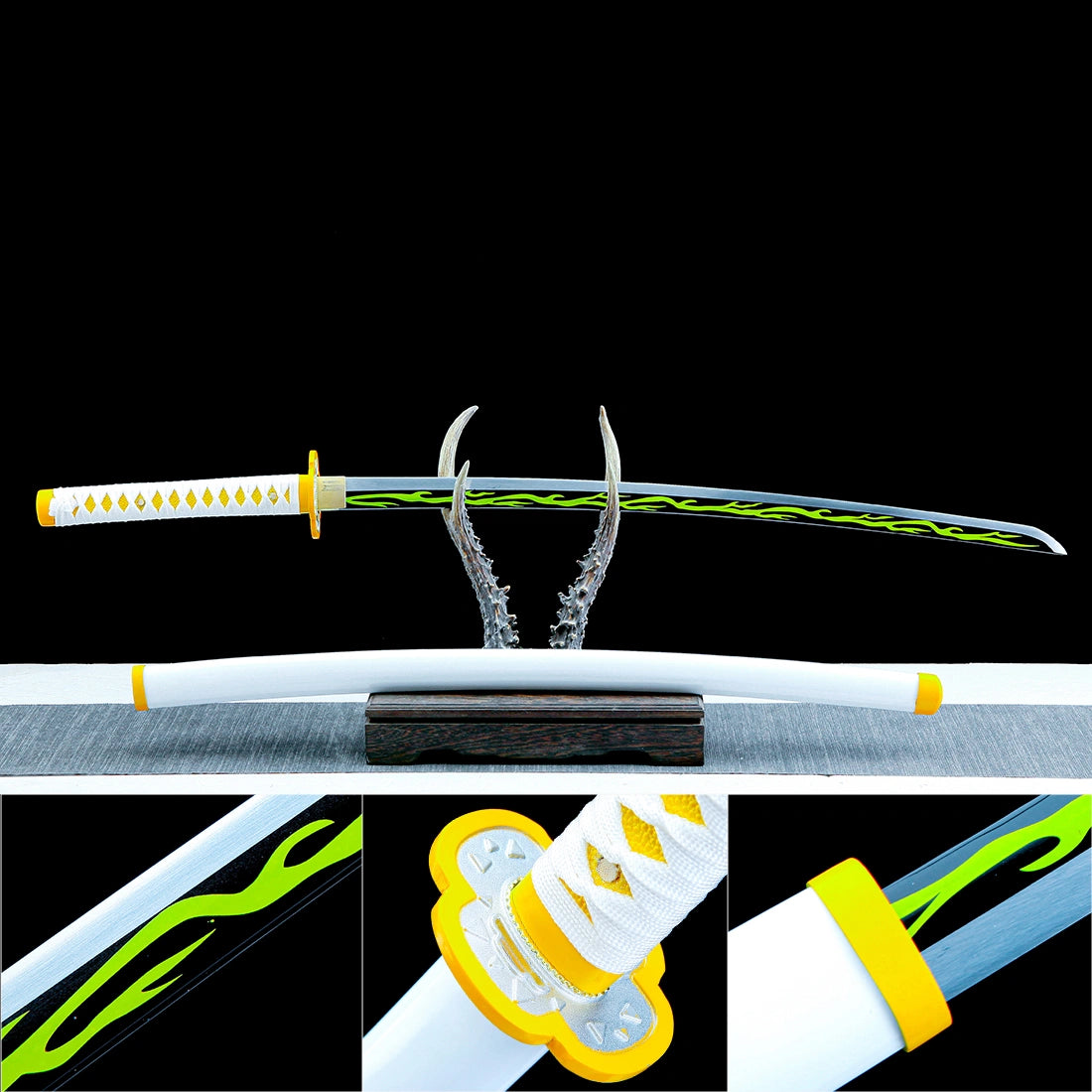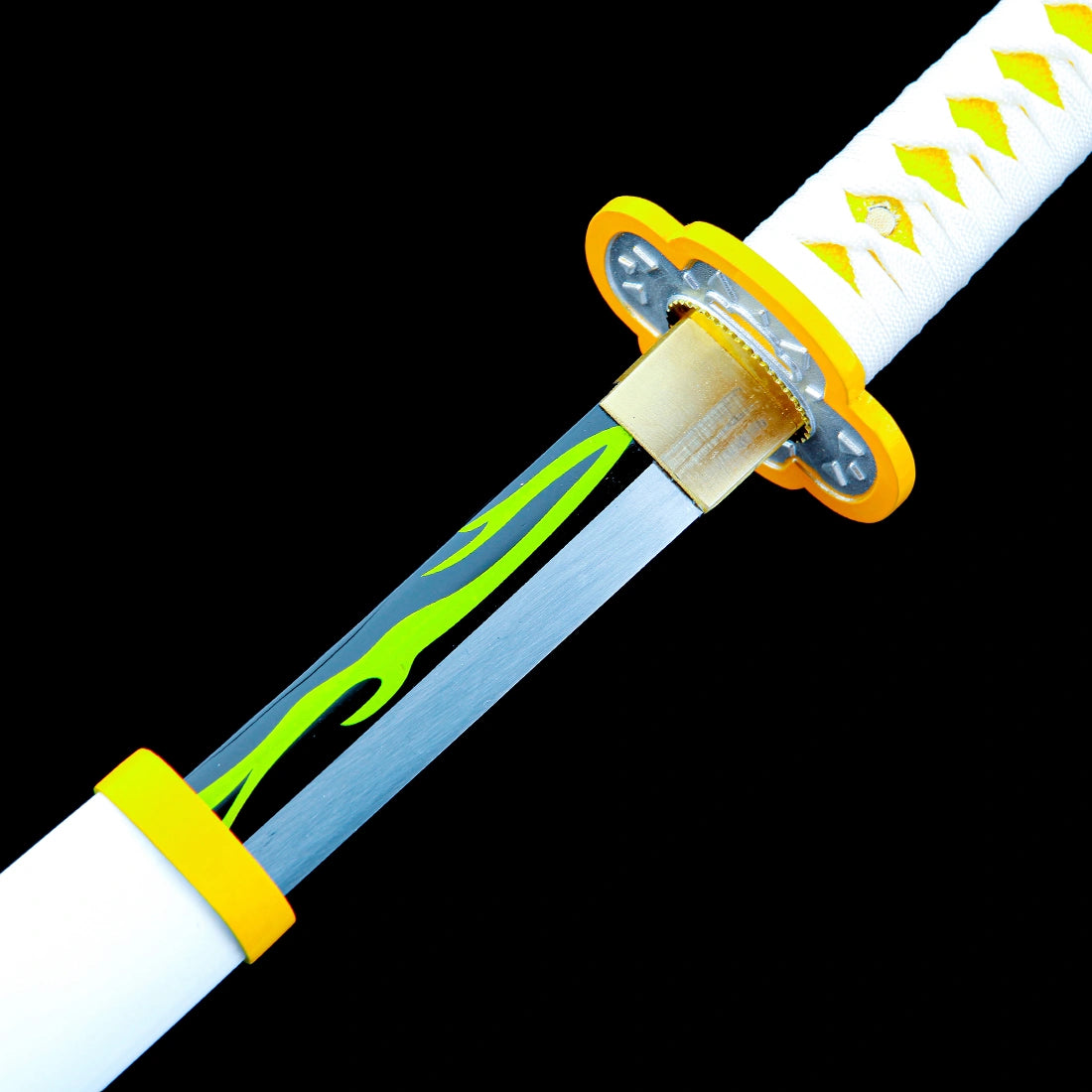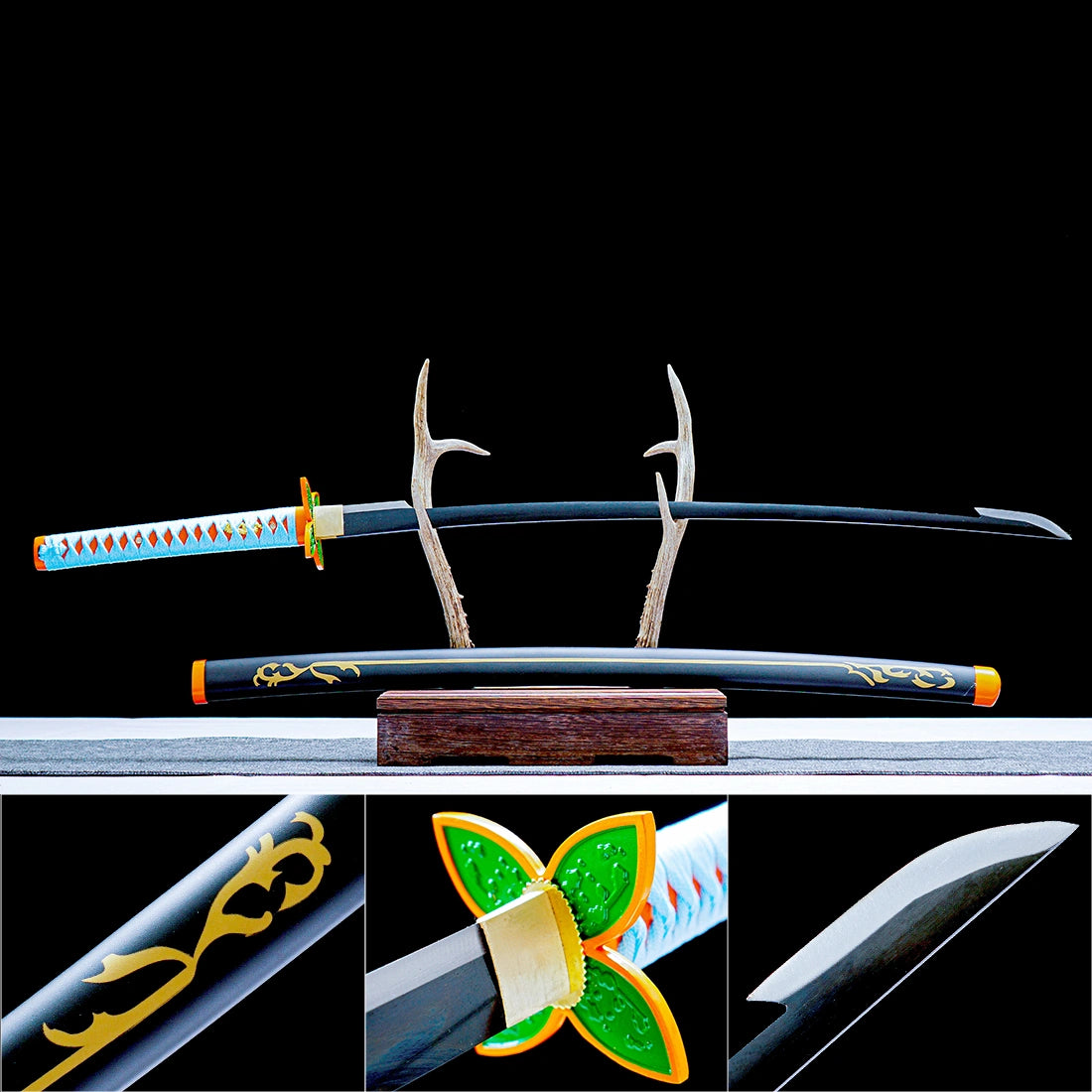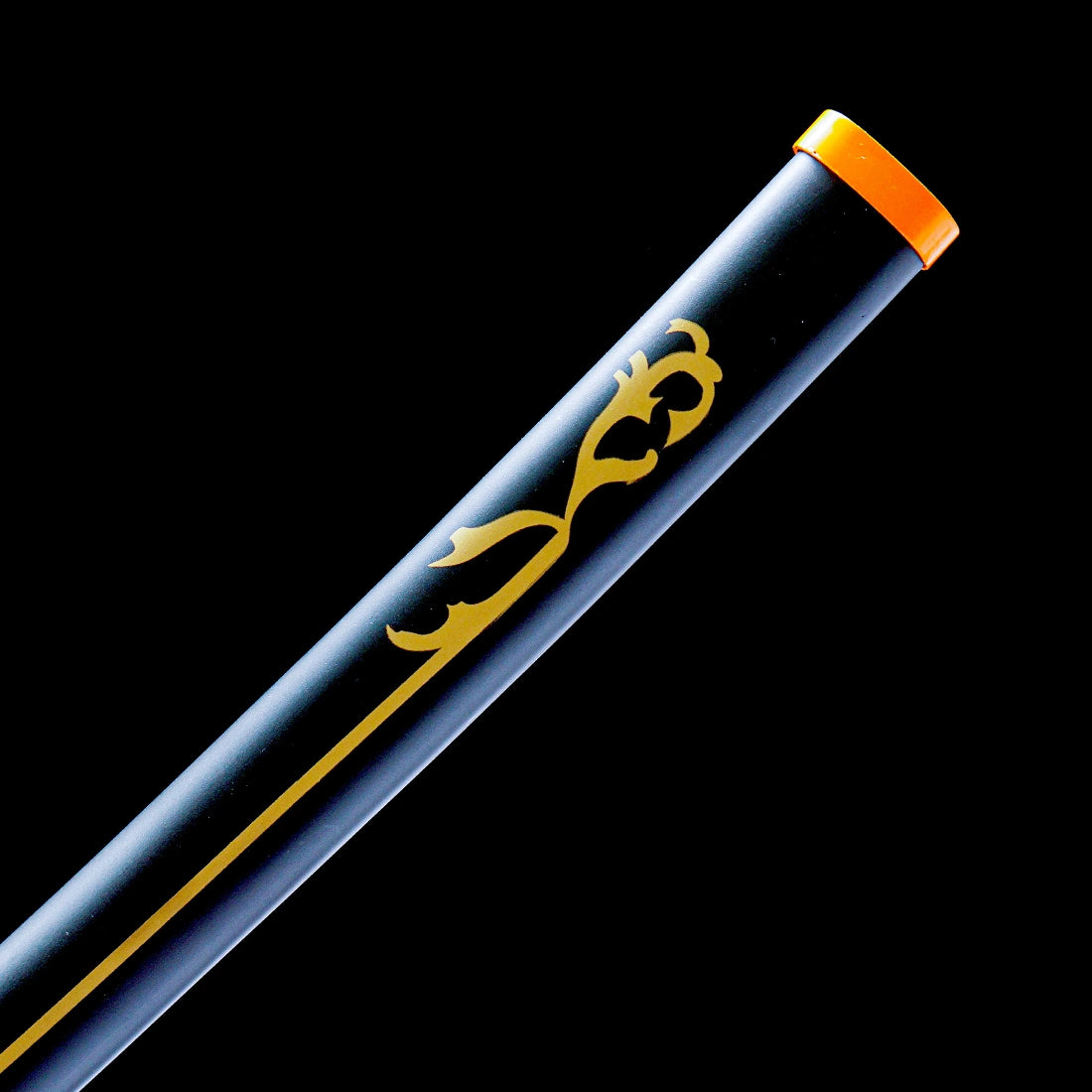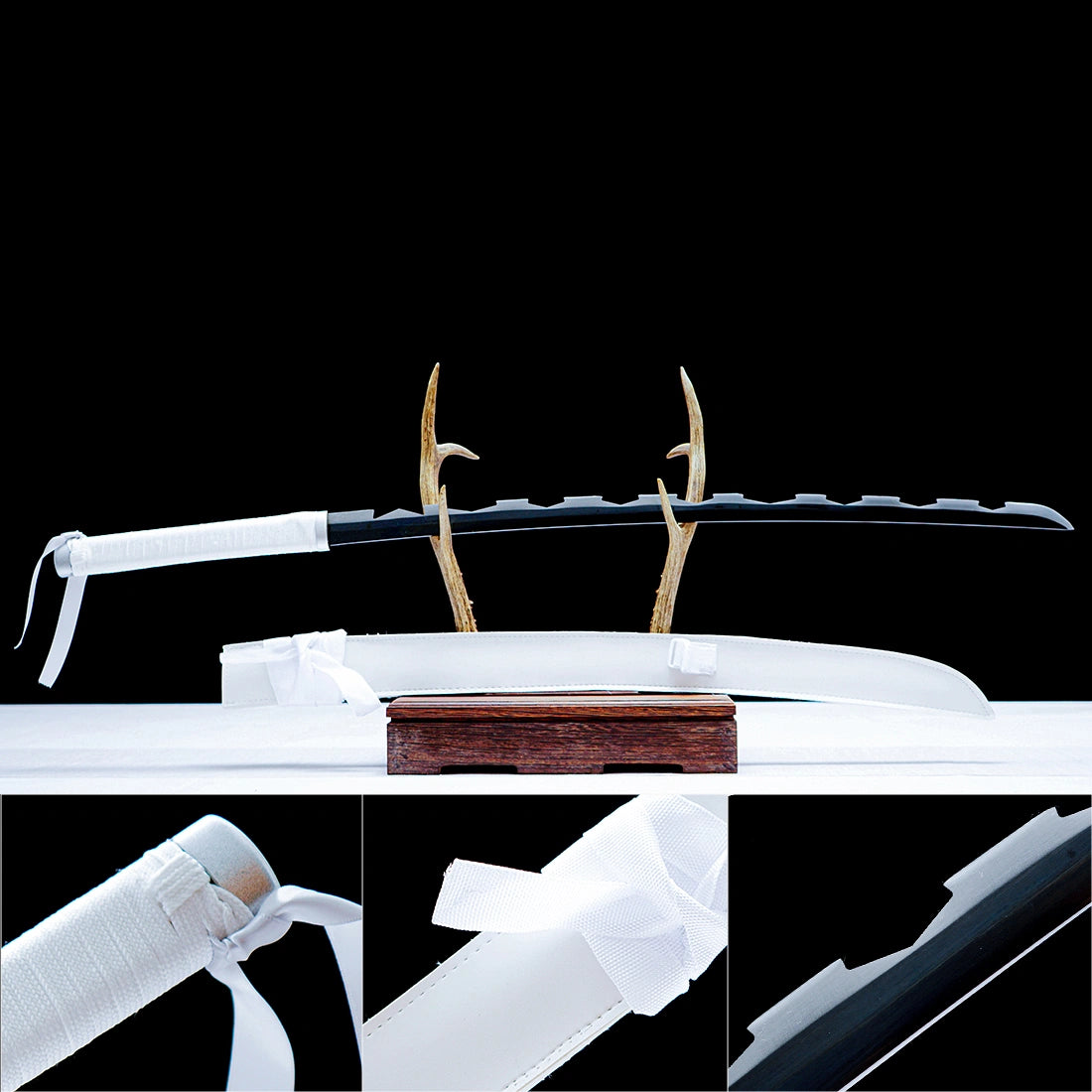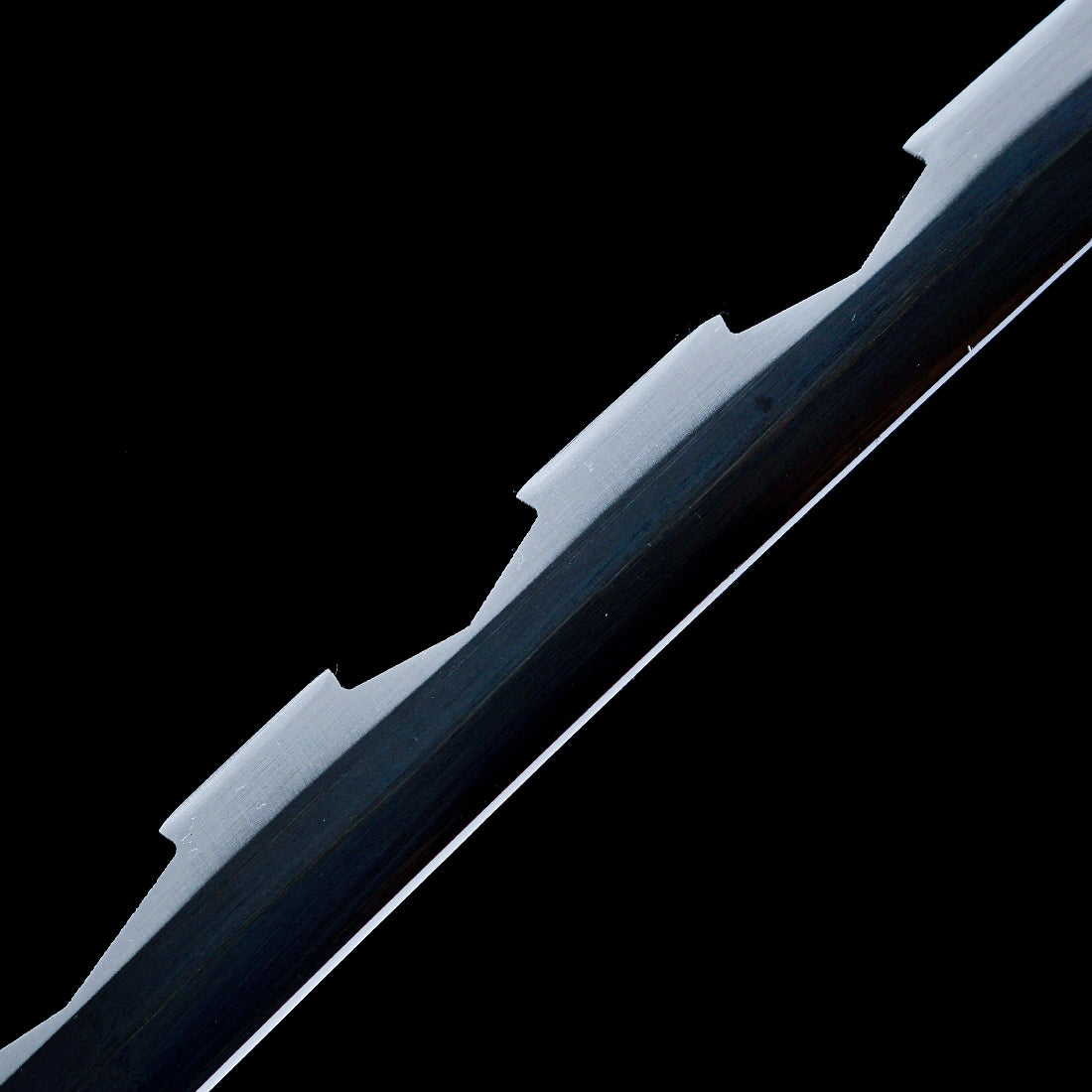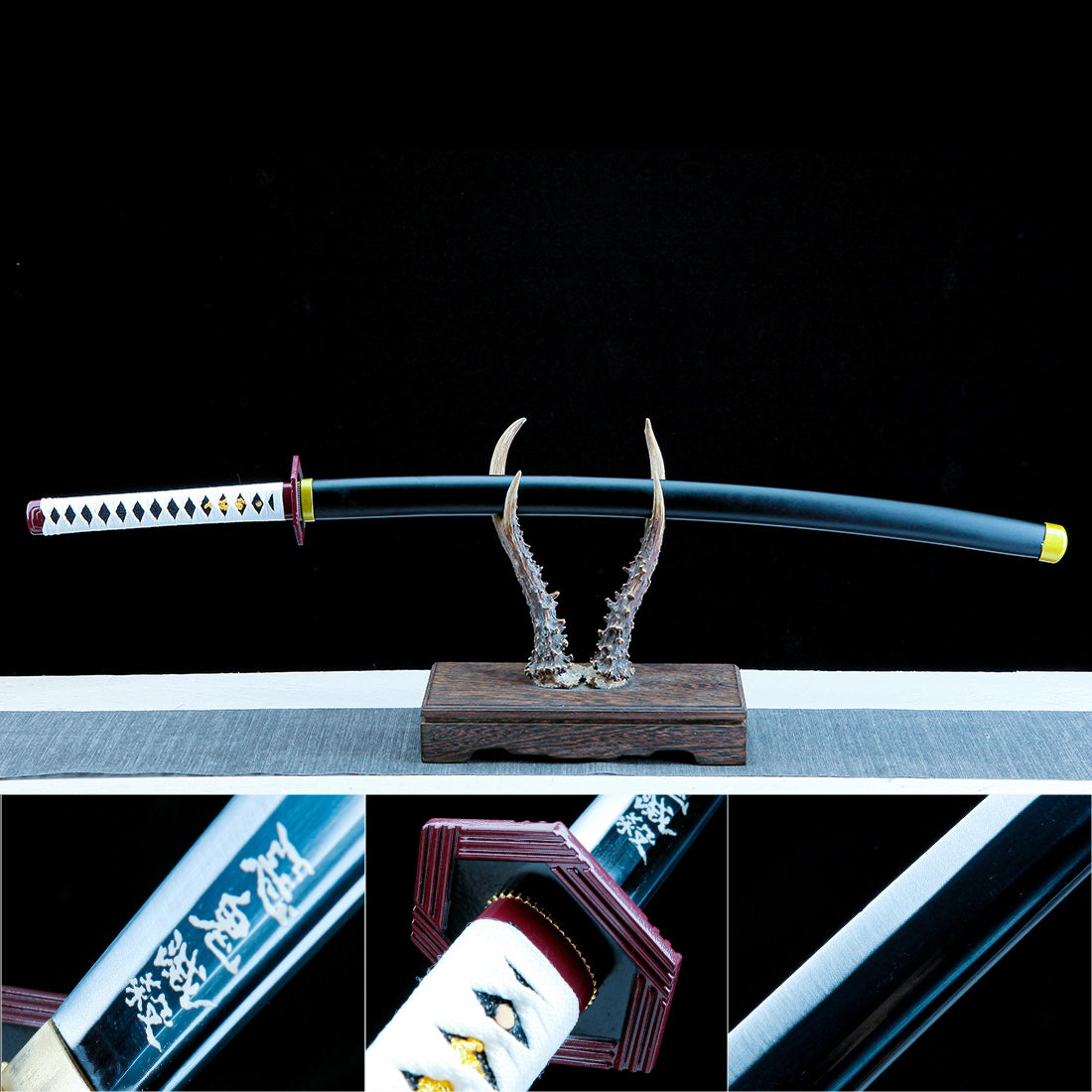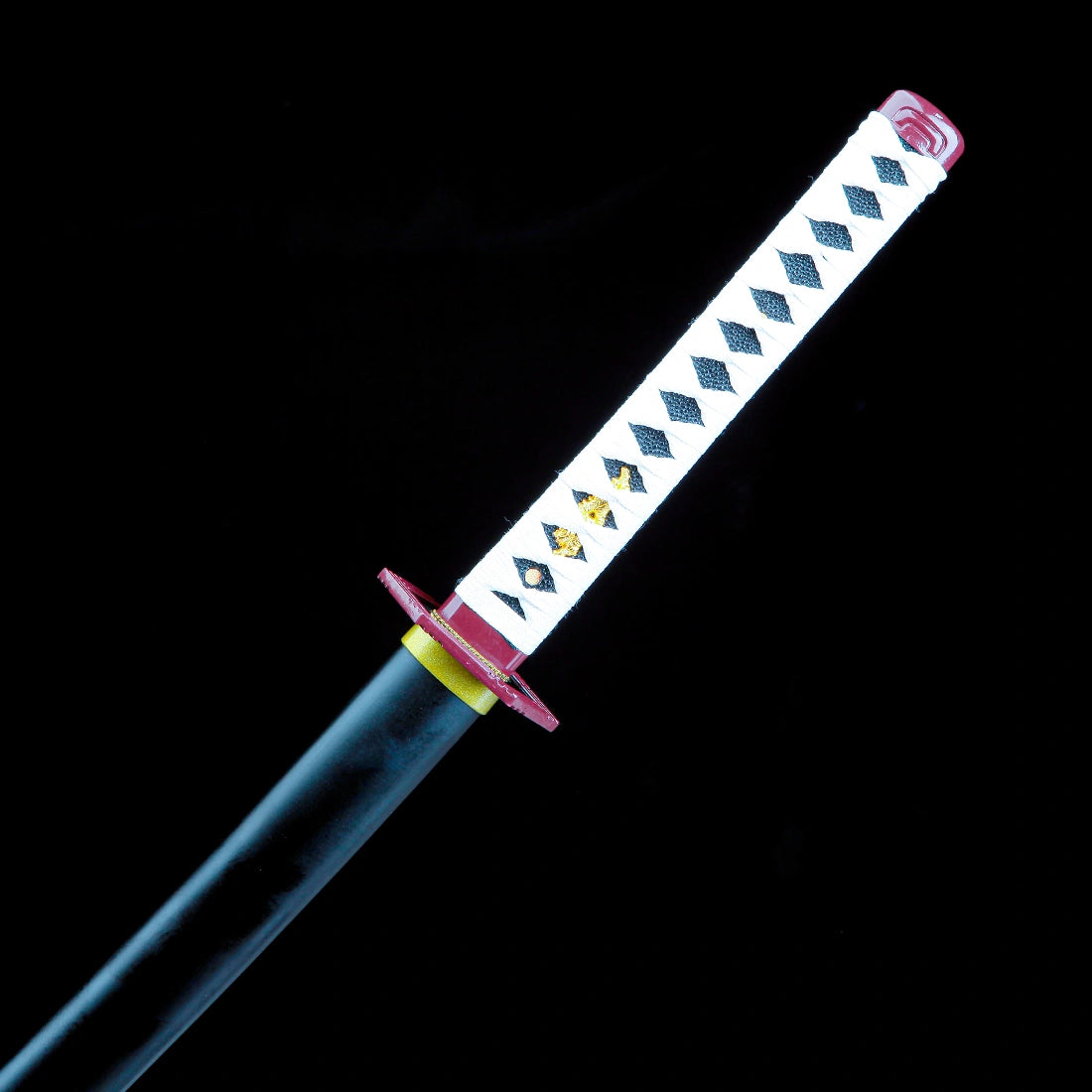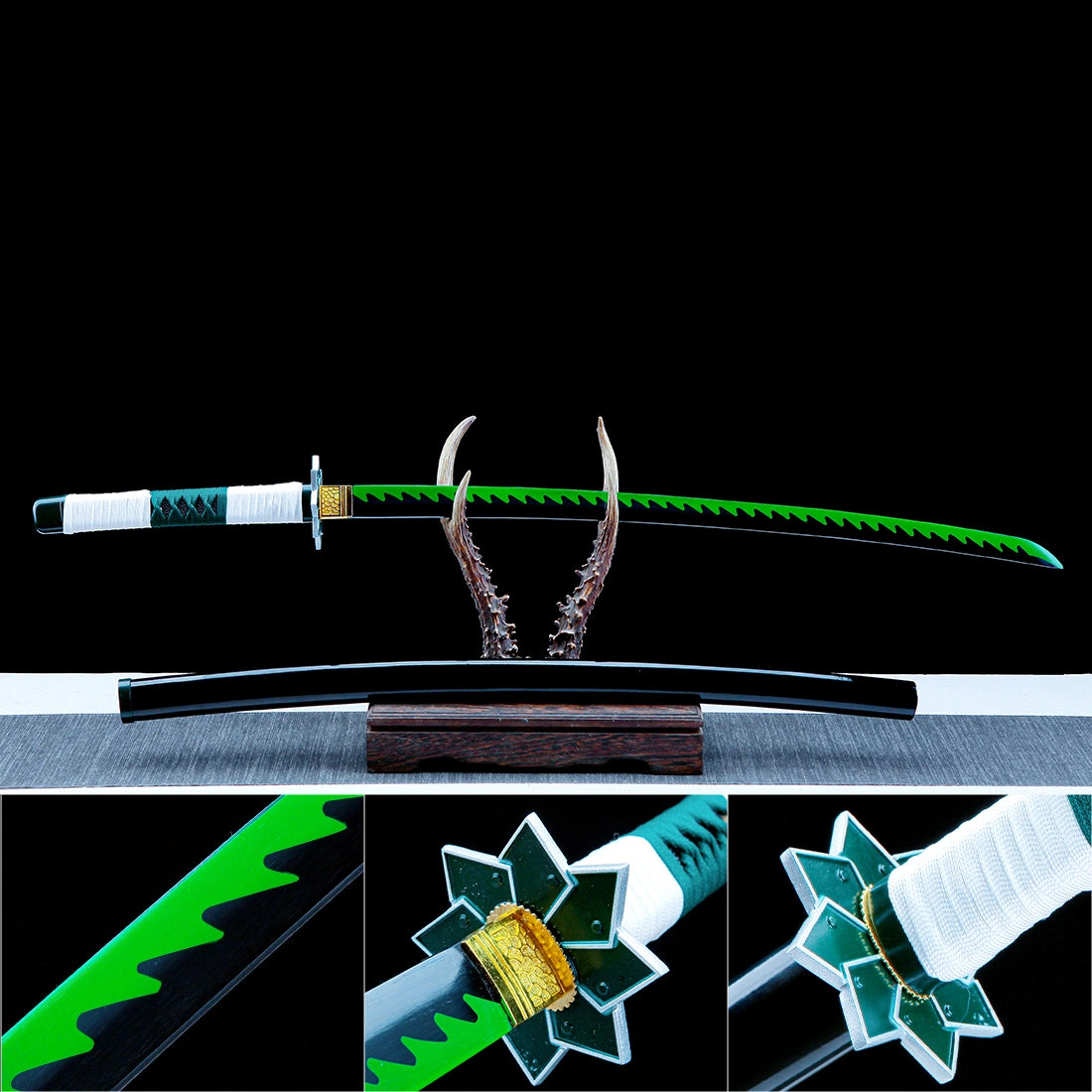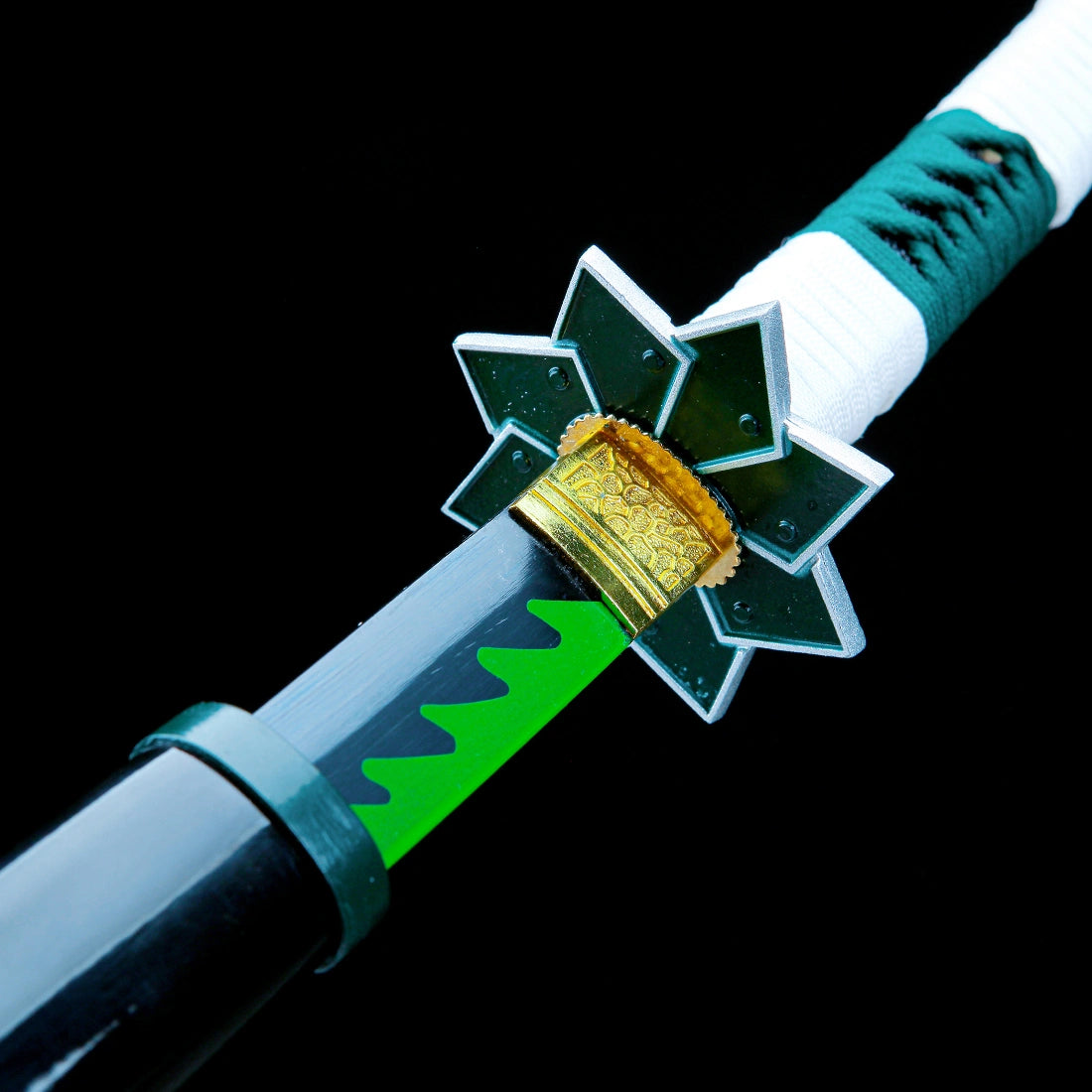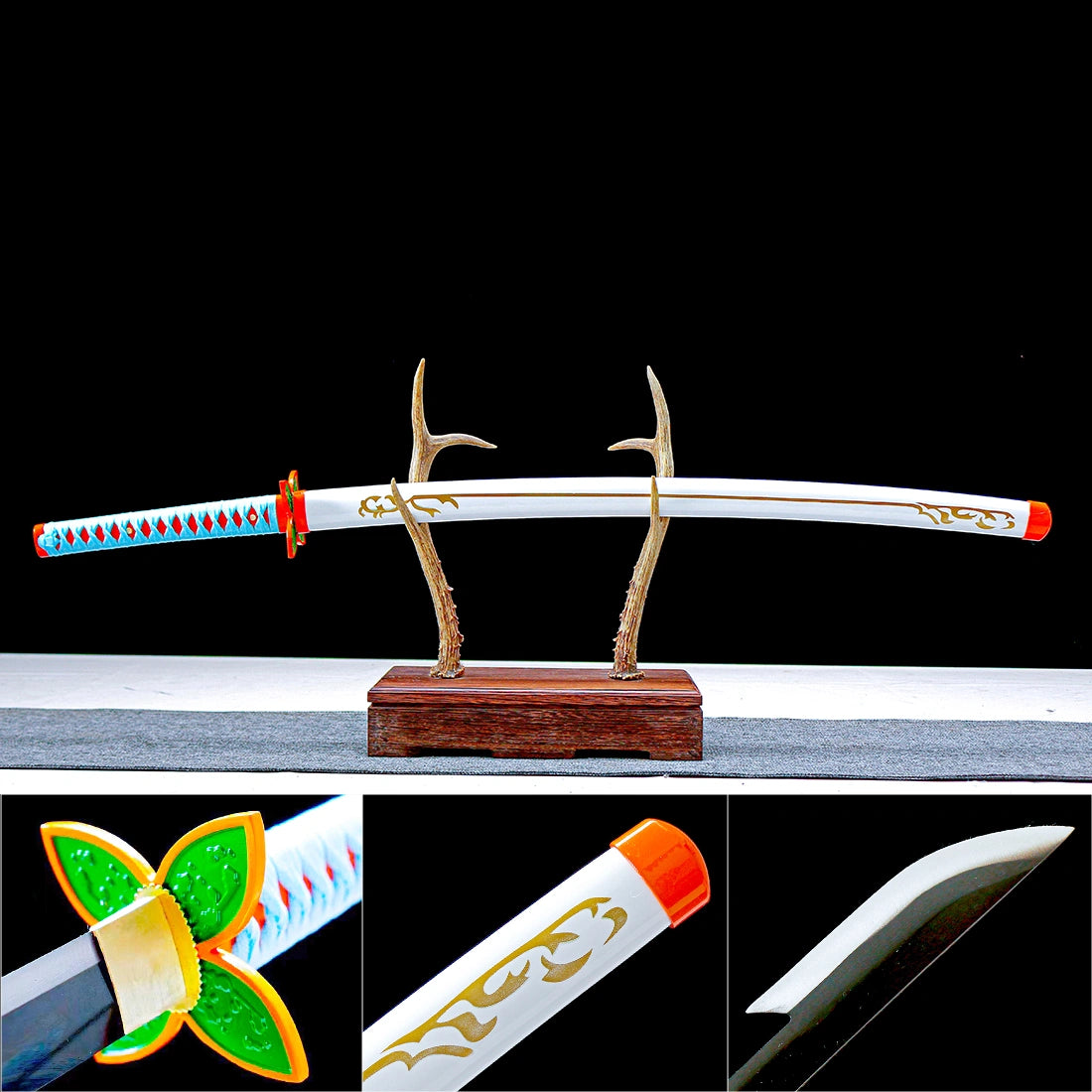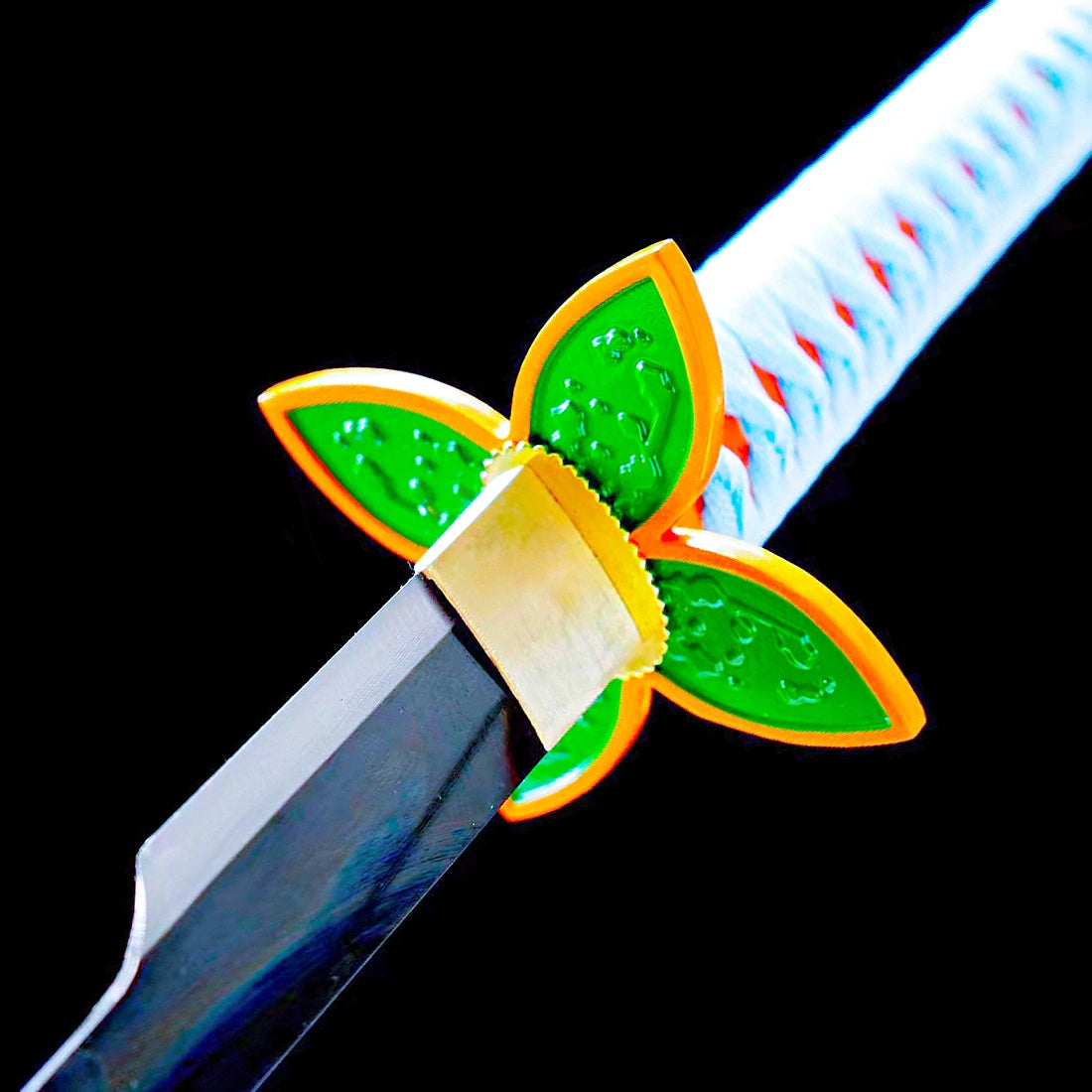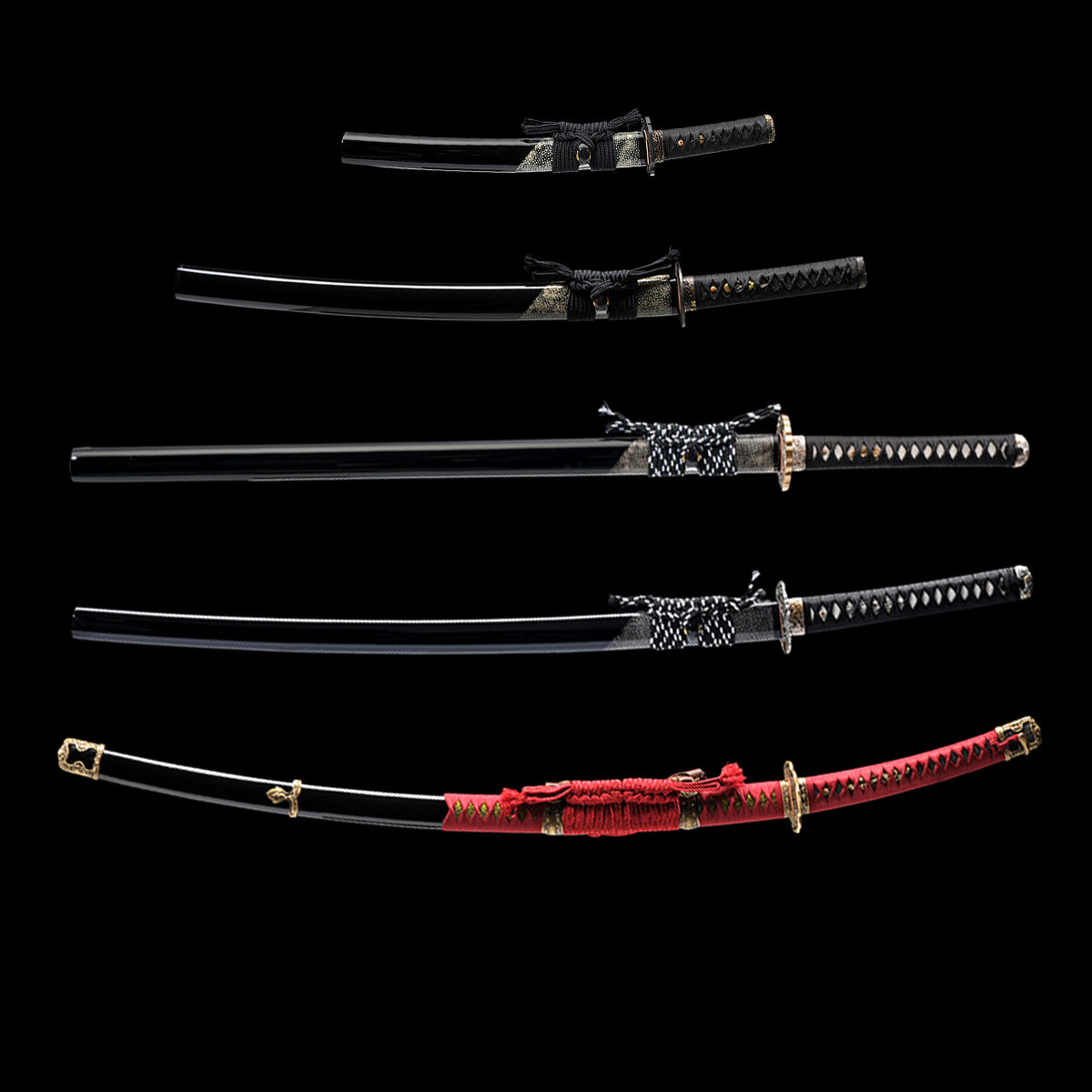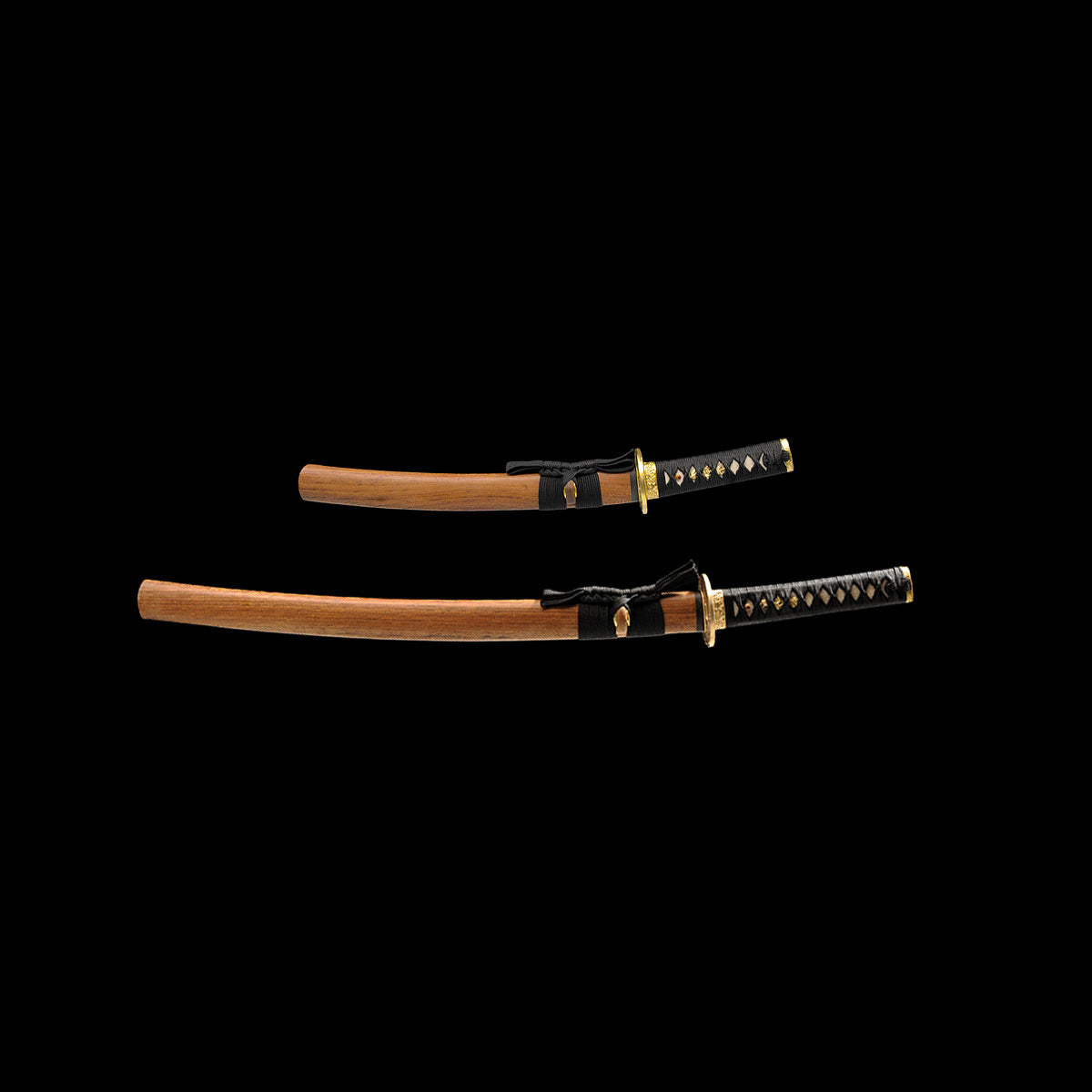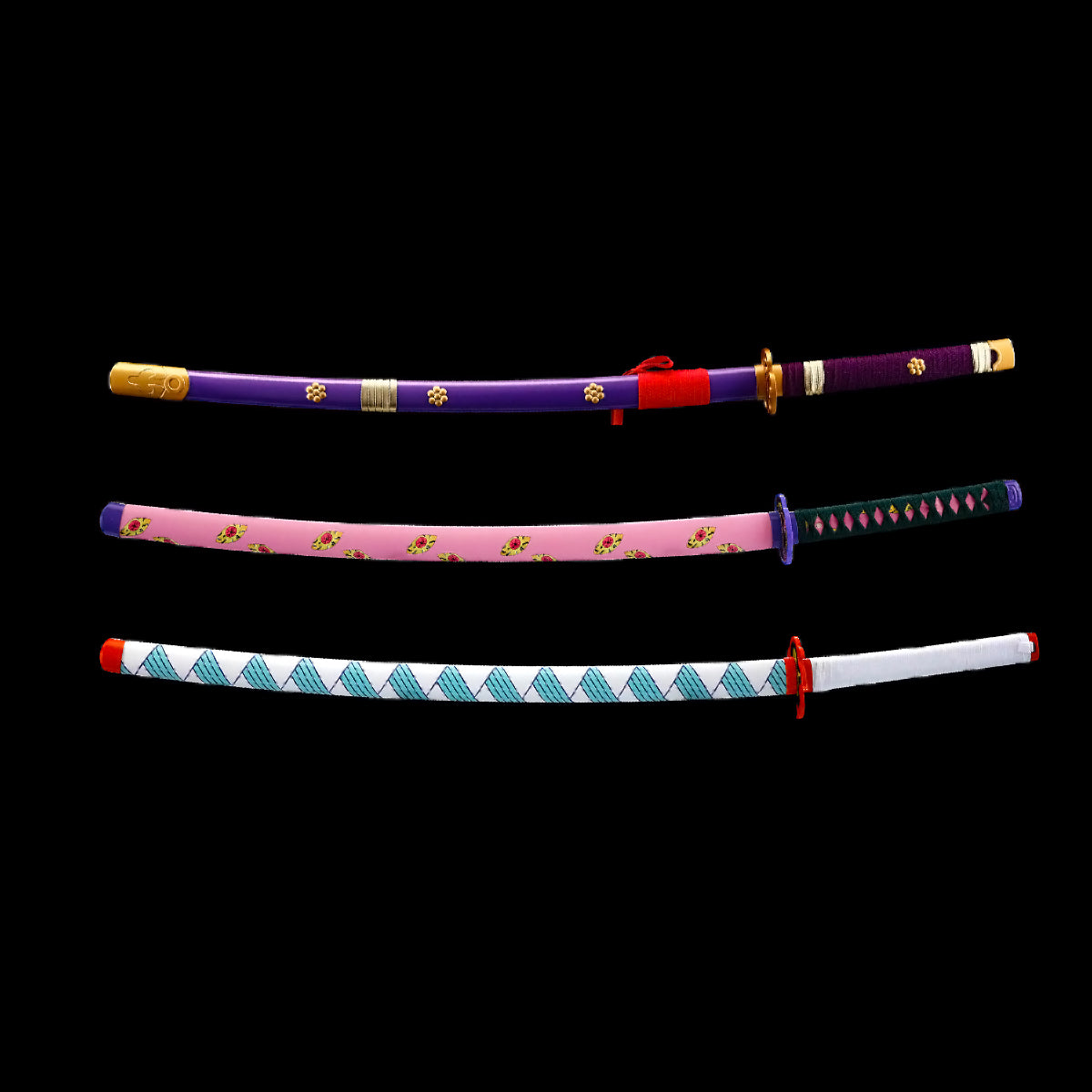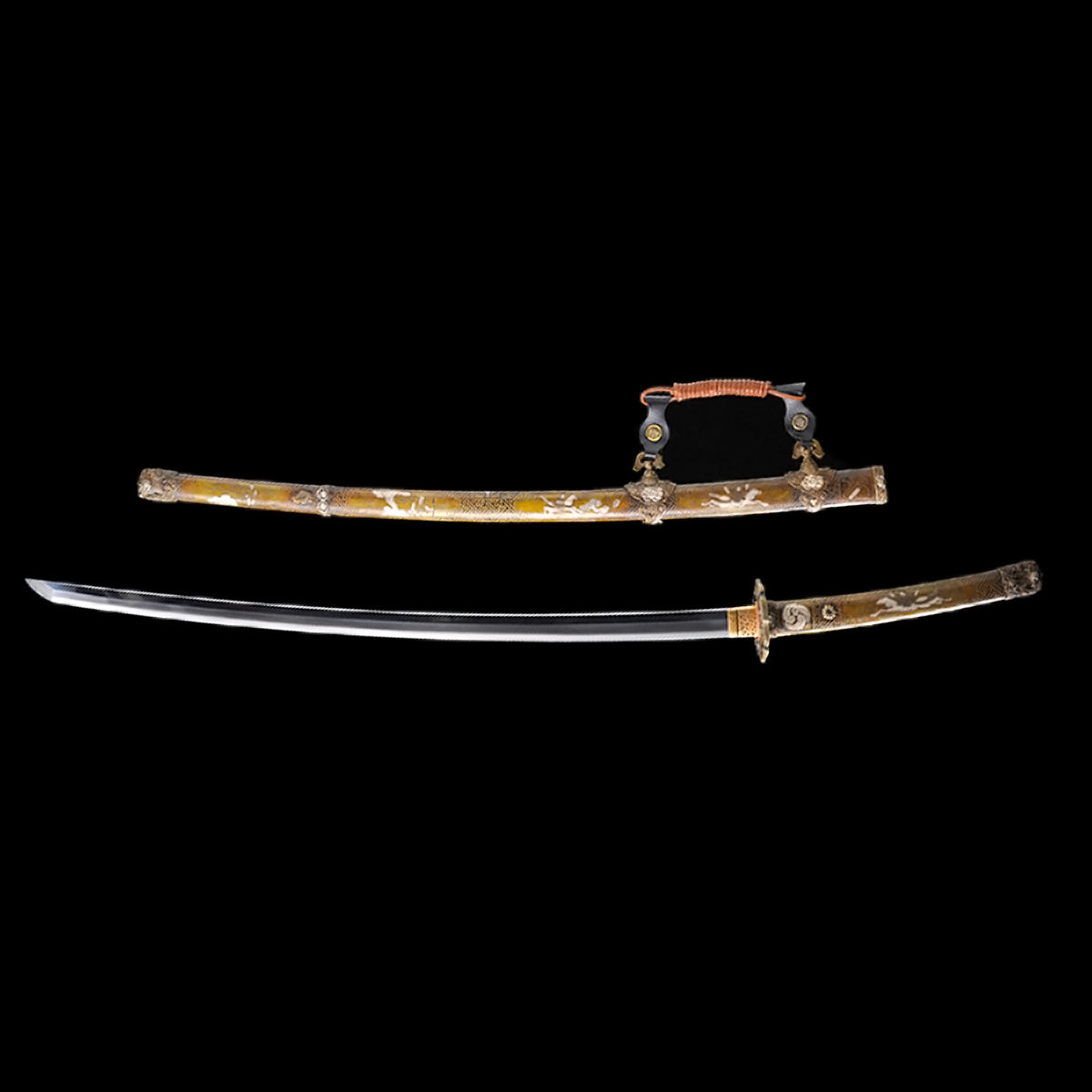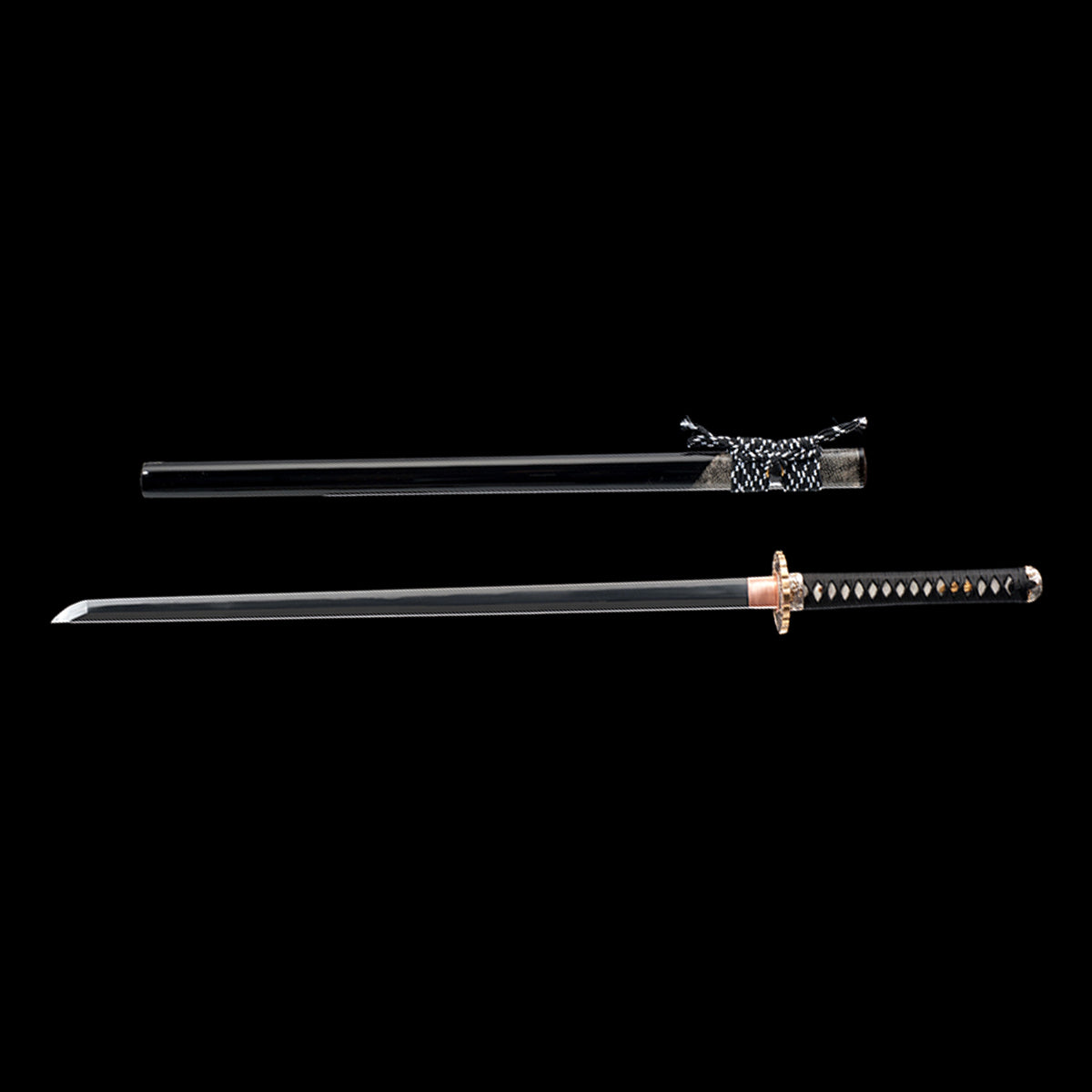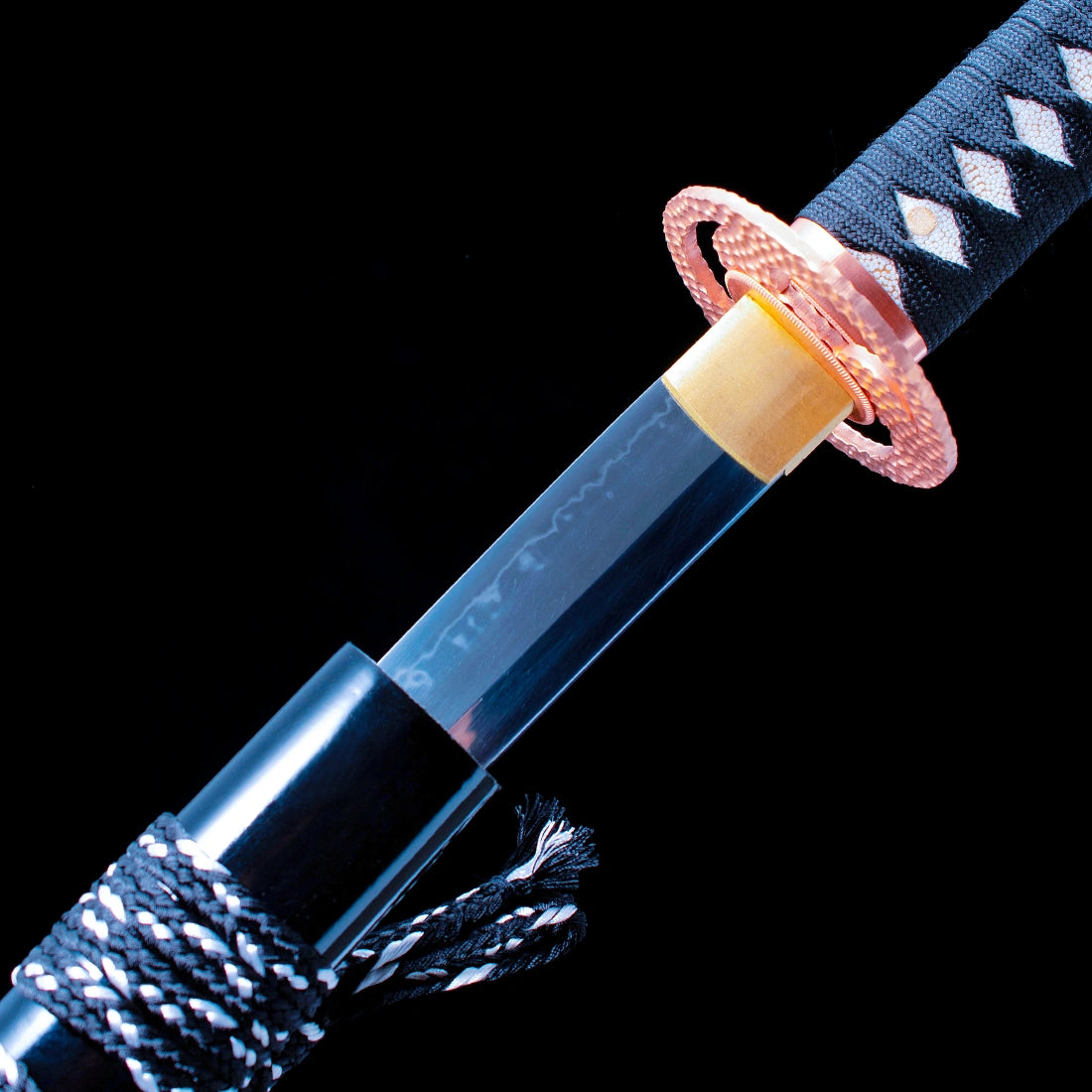FAQs
What is the name of the Demon Slayer sword?
What is the name of the Demon Slayer sword?
The Blades of Demon Slayer: A Professional Analysis of Fiction and Historical Inspiration
The swords wielded by the Demon Slayer Corps in Koyoharu Gotouge's Kimetsu no Yaiba (Demon Slayer) are central to the series' lore and aesthetic. It is crucial to understand from the outset that these are fictional weapons with supernatural properties. However, their design, nomenclature, and concept are deeply inspired by the historical and cultural context of real Japanese swords (Nihontō).
There is no single "Demon Slayer sword"; each member of the Corps wields a unique blade. However, they all share a common name and base structure.
1. The General Term: Nichirin Tō (日輪刀) - The "Sun Blade"
The official name for the standard issue weapon of the Demon Slayer Corps is the Nichirin Tō (日輪刀), which translates directly to "Sun Wheel Sword" or "Sun Blade."
- Etymology and Meaning:Nichirin (日輪): This means "sun" or "solar ring." This is the most significant part of the name, as it directly references the blades' core function: they are forged from a special ore that absorbs sunlight, the only thing capable of truly killing demons.Tō (刀): The general term for a single-edged sword or blade (the same character used in katana).
- Function and Lore: The Nichirin Sword is not a standard steel blade. It is crafted from Scarlet Ore (Scarlet Iron Sand), found on mountains perpetually bathed in sunlight. This gives the metal its unique sunlight-absorbing property. When a demon is decapitated by a Nichirin Blade, it prevents their rapid cellular regeneration and ensures their destruction.
2. The Common Misnomer: "Nichirin Katana" (日輪刀)
The blades are almost universally referred to by fans as "Nichirin Katana." While understandable, this is a slight misnomer from a technical standpoint.
- Katana (刀) refers specifically to a long sword worn thrust through the obi with the edge facing up. This is a classification based on method of wear.
- The Nichirin Swords are worn in a variety of ways: on the back (like Tanjiro), in a specially designed hip scabbard (like Zenitsu), or even broken down into segments (like Muichiro). Their classification is based on material and function, not wear.
- Therefore, the more accurate general term is simply Nichirin Tō (日輪刀), or "Nichirin Sword." However, given their size, curvature, and overall design, calling them "katana" is a reasonable colloquialism within the fictional context.
3. Unique Variations and Specialized Blades
Beyond the standard Nichirin Sword, the series features several unique variations that deviate from the standard form.
- Shinobu Kochō's Blade: The sword of the Insect Hashira is the most significant deviation. It is designed as a thrusting sword with a needle-like point, more akin to a rapier or a shikomizue (a sword cane) than a traditional Japanese blade. This is because Shinobu lacks the physical strength to decapitate demons. Instead, her blade is designed to inject a potent wisteria-based poison.
- Gyomei Himejima's Weapon: The Stone Hashira wields not a sword, but a fukumen no kusari (覆面の鎖), a weighted axe head connected by a long chain to a spiked flail. This is a completely unique weapon, though the components (axe, flail, chain) have precedents in Japanese martial history (kusarigama, masakari).
- Dual-Wielded Blades: Some slayers, like the late Water Hashira Giyu Tomioka in his final battle, are shown using two Nichirin Swords. This is a reference to the historical (though rare) practice of Niten Ichi-ryū (二天一流) or other two-sword styles.
4. Historical and Cultural Inspirations
While fictional, the Nichirin Swords are brilliant creative adaptations of real concepts:
- Color-Changing Blades: The concept that a Nichirin Blade changes color upon first being drawn by its owner is pure fantasy. However, it is a powerful narrative device that echoes the real-life appreciation for the aesthetic qualities of a Japanese sword's temper line (hamon), which can appear in various patterns and levels of brightness.
- The "Bright Red" Nichirin Sword: Tanjiro's ability to turn his blade "Bright Red" (En'ō no Nichirin Tō) to hinder demon regeneration is inspired by the real-life process of differential hardening (yaki-ire). When a swordsmith clay-tempers a blade, the edge becomes hard and bright (martensite), while the spine remains softer and darker (pearlite). The fantasy element is the heat from his blood being channeled into the metal.
- The Hashira's Unique Hilts: The distinct handguards (tsuba) for each Hashira are a direct reference to the real-world practice of customizing sword fittings. Samurai would often have family crests (mon) or thematic designs on their tsuba, fuchi (collar), and kashira (pommel). The Hashira's tsuba designs symbolize their Breathing Style (e.g., flames for Rengoku, butterflies for Shinobu).
Synthetic Summary: The Definitive Answer
- General Term: Nichirin Tō (日輪刀) - "Sun Blade" or "Sun Wheel Sword."
- Common Colloquialism: "Nichirin Katana" - While not technically precise regarding wear, it is universally understood to refer to these swords.
- Defining Feature: They are forged from Scarlet Ore that absorbs sunlight, making them lethal to demons.
- Key Variations: Include Shinobu's needle-like thrusting sword, Gyomei's axe and flail, and the ability to turn a blade "Bright Red."
Conclusion: The "Demon Slayer sword" is a masterful piece of fictional weapon design. It takes the iconic form of the Japanese katana and imbues it with a critical supernatural property that is central to the plot. While the names Nichirin Tō and Nichirin Katana are fictional, they are perfectly constructed to sound authentic, drawing from the deep well of Japanese sword terminology and lore to create a believable and compelling fantasy weapon.
What is Tanjiro's sword called?
What is Tanjiro's sword called?
Professional Analysis: Tanjiro Kamado's Nichirin Blade
1. Primary Name and Classification: The Nichirin Sword
The weapon wielded by Tanjiro Kamado is formally classified as a Nichirin Tō (日輪刀), which translates directly to "Sunlight Wheel Sword" or more commonly, "Nichirin Blade."
- Etymology: The name is derived from the Japanese words:日輪 (Nichirin): Sun; the solar disc.刀 (Tō/Katana): Sword; specifically a single-edged, curved blade.
- Functional Purpose: Nichirin Swords are the primary weapons of the Demon Slayer Corps. They are forged from a unique fictional ore that absorbs and stores sunlight, which is the sole natural weakness of demons (oni). A single cut from such a blade is lethal to demons, as it prevents their potent regenerative abilities and causes them to disintegrate.
2. Metallurgical and Esoteric Properties
The blade's effectiveness is not merely due to its sharpness but its specialized composition and forging process.
- Ore Composition: The core material is Scarlet Ore (猩々砂, Shōjōsha) and Scarlet Iron Sand (猩々砂鉄, Shōjō Satetsu), mined from mountains perpetually bathed in sunlight (e.g., the Sunlight Mountain). This ore has a unique crystalline structure that allows it to absorb and retain solar energy.
- Forging Process: The swords are meticulously crafted by expert swordsmiths from the Swordsmith Village (刀鍛冶の里, Katanakaji no Sato). The process is sacred and shrouded in secrecy. The final and most critical step is the Quenching (焼入れ, Yakiire). During this phase, the red-hot blade is plunged into water that has been super-saturated with the same sunlight-absorbing ore, permanently locking the solar properties into the metal.
- Color Change: A defining characteristic of a Nichirin Blade is that it changes color upon first being drawn by its destined wielder. This is not a superficial paint or dye; it is a metaphysical reaction between the swordsman's breathing technique and the sword's unique ore. The resulting color is a reflection of the user's spirit, breathing style, and fighting spirit.
3. Tanjiro's Specific Blade: The Black Nichirin Sword
Tanjiro's specific sword is most famously known for its color: it turns a Jet Black (黒, Kuro) hue.
- Significance of the Black Blade: Within the lore of Demon Slayer, a black blade is exceptionally rare and is historically viewed with superstition and ominousness.Ominous Reputation: It is known as a color of misfortune. No demon slayer who wielded a black blade ever achieved the rank of Hashira (Pillar), and they often met gruesome ends. This is because the black color is believed to signify a wielder who practices the Sun Breathing (日の呼吸, Hi no Kokyū) style, the original and most powerful breathing form from which all others are derived. Demons, particularly Muzan Kibutsuji, have a vested interest in eradicating any user connected to Sun Breathing.Sun Absorption: The narrative suggests that a black blade is the ultimate color for a Nichirin Sword, as black is the color that absorbs all wavelengths of light most completely. This implies Tanjiro's sword absorbs sunlight more efficiently than any other color, making its cuts even more potent against demons.The "Cursed" Color: This reputation is why the swordsmith Haganezuka initially reacts with such fury when the blade turns black; he views it as a bad omen for both the sword and its wielder.
4. Structural History and Modifications
Tanjiro's sword is not a single, unchanging artifact. It undergoes significant changes and damage throughout the series:
- Initial Sword: A standard, well-crafted Nichirin Katana with a black blade and a handguard (鍔, tsuba) in the shape of a green, four-pointed wheel, representing the Kamado family's legacy of selling charcoal.
- The Broken Blade: His original sword is shattered during his battle with the Lower Rank Six demon, Gyutaro. This highlights a vulnerability: while lethal to demons, Nichirin Blades can still be broken by sufficient force, especially when pitted against a Blood Demon Art that attacks the blade itself.
- The Reforged Sword: The sword is expertly reforged by Hotaru Haganezuka. The new blade retains its iconic black color but is made even stronger through Haganezuka's rage and dedication.
- The Bright Red Edge: A pivotal evolution occurs when Tanjiro learns to manually heat his blade with his own grip, turning the cutting edge a searing, Bright Red (赫刀, Kakutō).Mechanism: This is achieved by plunging the blade into his own body or through extreme focus, generating immense heat and friction. This technique is later refined.Effect: A Bright Red Nichirin Blade is exponentially more powerful. It not only prevents demon regeneration but also nullifies Blood Demon Arts on contact and severely weakens a demon's overall abilities. This becomes a crucial weapon against the highest-ranking Upper Moon demons and Muzan himself.
5. Thematic and Narrative Significance
The sword is more than a tool; it is an extension of Tanjiro's character and the series' core themes.
- Heritage: It connects him to his ancestor, Sumiyoshi, who witnessed the first Sun Breathing user, Yoriichi Tsugikuni (who also wielded a black blade).
- Destiny: The black color marks him as the inheritor of the Sun Breathing style, placing a tremendous destiny and target on his back.
- Perseverance: The multiple breakages and reforgeings mirror Tanjiro's own journey—constantly being broken down but always rising again, stronger and more determined.
- The Sun vs. The Night: The sword is the physical manifestation of the sun, humanity's only hope against the eternal night of the demons.
In summary, while the simple answer is a "Black Nichirin Sword," its full identity encompasses its name (Nichirin Tō), its unique properties (forged from Scarlet Ore, color-changing, Bright Red edge), its ominous color symbolism, and its profound role as a narrative symbol of Tanjiro's destiny and the eternal struggle between sunlight and darkness.
Is Nichirin katana real?
Is Nichirin katana real?
Professional Analysis: The Reality of the Nichirin Katana
Executive Summary
The Nichirin Katana (日輪刀) is a fictional weapon conceived by Koyoharu Gotouge for the manga and anime series Demon Slayer: Kimetsu no Yaiba. There is no historical, archaeological, or metallurgical evidence for the existence of a katana forged from "Scarlet Ore" that can absorb and store sunlight to kill demons. However, its design and concept are inspired by and grounded in the very real and rich history of Japanese swordmaking, which is then elevated to a supernatural level for narrative purposes.
1. Deconstructing the Fictional Elements
The core attributes that define a Nichirin Katana are pure inventions of fantasy:
- Scarlet Ore (猩々砂, Shōjōsha): This is a fictional material. No known ore or metal on Earth possesses the property of absorbing and storing photons (sunlight) in a stable, lethal manner. The concept of a metal permanently "imbued" with a specific energy source is a staple of fantasy and science fiction.
- Lethality to Demons: As demons are fictional entities, a weapon designed specifically to target their weakness (sunlight) is, by definition, fictional. The mechanism—where a cut from the blade inhibits cellular regeneration and causes disintegration—is a narrative device without basis in real-world biology or physics.
- Color Change Phenomenon: The instantaneous and permanent color change of the blade's metal upon being drawn by its owner is a metaphysical concept. In reality, the color of steel is determined by its chemical composition, heat treatment, and the formation of surface oxides (e.g., via bluing or controlled oxidation), not by a spiritual bond with a wielder.
2. Historical and Cultural Inspirations in the Real World
While the Nichirin Katana itself is not real, its portrayal is deeply respectful of and inspired by actual Japanese swordmaking tradition (Nihontō 日本刀).
- The Katana Form: The weapon's physical form—a single-edged, curved blade with a long grip for two-handed use—is an accurate depiction of a traditional katana. Its components (e.g., tsuba handguard, saya scabbard, tsuka hilt) are all authentic.
- The Swordsmith Village: The secretive, dedicated, and highly skilled swordsmiths living in a remote village mirror the historical reality of famous Japanese sword-making centers like Seki in Gifu Prefecture or the traditions of smiths from provinces like Yamato or Sagami. The portrayal of the smiths' intense focus and spiritual approach to their craft is exaggerated but rooted in the real-life reverence for the art (Tōkō 刀工).
- The Quenching Process (Yakiire 焼入れ): This is a critical and very real step in katana production. The blade is heated to a critical temperature and then rapidly cooled by plunging it into a water trough. This process, called quenching, creates an extremely hard, brittle cutting edge (ha or yakiba) and a softer, more flexible spine (hira). The fictional twist is the composition of the quenching water; real smiths use plain water or oil, not water infused with magical ore.
- The Concept of a "Chosen" Sword: The idea of a warrior having a blade that is uniquely suited to them is a common trope in Japanese folklore and history. Legendary swords like Kusanagi-no-Tsurugi (草薙の剣) are deeply tied to the identity and destiny of their wielders. The Nichirin blade's color change is a modern, fantastical interpretation of this ancient trope.
- The "Cursed" Black Blade: The superstition surrounding Tanjiro's black blade draws from real historical beliefs. Certain famous swords in Japanese history were considered cursed or brought misfortune to their owners, such as Muramasa blades, which were famously feared and disliked by the Tokugawa shogunate.
3. Modern Replicas and "Real" Nichirin Katanas
In the context of modern commerce and fan culture, "real" Nichirin Katanas do exist, but they are replicas and must be understood as such.
- Functional Replicas: These are real, physical swords made by modern forges. They are typically constructed from carbon steel or spring steel (e.g., 1060, 1095, T10 tool steel) and are heat-treated and tempered to be functional, meaning they can be used to cut targets like tatami mats or bamboo.They accurately replicate the visual appearance of the swords from the anime: the color of the blade, the handguard design (e.g., Tanjiro's green wheel pattern), and the hilt wrapping.The colored blade is achieved through modern industrial processes such as Physical Vapor Deposition (PVD) coating, powder coating, or anodization. These are surface-level treatments that add color but do not alter the fundamental properties of the underlying steel. A PVD-coated black katana is still a functional piece of sharpened steel; it is not "imbued with sunlight."
- Decorative/Prop Replicas: These are non-functional items made from stainless steel, zinc alloy, or even wood and plastic. They are designed solely for display, cosplay, or collection and are not built to withstand any form of impact or stress.
- Legal Status: It is crucial to note that in Japan and many other countries, the ownership and carrying of functional bladed weapons are heavily restricted by law. Replicas are often considered weapons, not toys.
Conclusion: A Synthesis of Art and Tradition
The Nichirin Katana is not a real historical weapon. It is a masterful work of fictional design that leverages the awe-inspiring, centuries-old tradition of Japanese swordsmithing to create a believable and compelling artifact within its story.
Its genius lies in taking a real-world object of immense cultural weight—the katana—and enhancing its mythological qualities through a supernatural premise. Therefore, while you cannot own a sword that truly kills demons, you can own a physically accurate replica that pays homage to both the artistry of Demon Slayer and the very real, profound craft of the Nihontō.
Does Tanjiro get the 300 year sword?
Does Tanjiro get the 300 year sword?
Professional Analysis: Tanjiro Kamado and the Yoriichi Type Zero's Sword
Executive Summary
No, Tanjiro Kamado does not acquire a 300-year-old Nichirin Katana in the traditional sense. However, he does obtain a blade that is over 300 years old, but it is not a functional weapon. The crucial event involves him breaking a training doll and retrieving the multiple ancient swords stored inside its body. The primary sword he takes from it is broken and unusable as a primary weapon. Instead, its value is historical, symbolic, and metallurgical; it serves as the template for forging his new, significantly stronger primary blade. Therefore, he does not "get the 300-year-old sword" to wield as-is, but he receives a new sword directly born from it.
1. The Source: Yoriichi Type Zero (縁壱零式, Yoriichi Zeroshiki)
To understand the swords, one must first understand their container.
- Origin: The Yoriichi Type Zero is an advanced mechanical training doll created over 300 years ago by a legendary swordsmith from the Sengoku period. This craftsman was the ancestor of Tanjiro's own swordsmith, Hotaru Haganezuka.
- Design and Function: The doll was engineered to replicate the swordsmanship of the creator's friend, Yoriichi Tsugikuni, the progenitor of Sun Breathing. It possesses six arms and can simulate an incredible 108 movements, making it an impossibly difficult training partner. No one had ever defeated it before Tanjiro.
- The Swords Within: To withstand the immense stress of its movements and the attacks of countless Demon Slayers over centuries, the doll's internal structure was reinforced with multiple Nichirin Katanas acting as its core framework. These were the original blades used by the swordsmith to calibrate the doll's movements against Yoriichi's techniques.
2. The Acquisition: Breaking the Unbreakable
The event occurs during Tanjiro's rehabilitation training at the Swordsmith Village (Chapter 98/Season 3 Episode 2 of the anime).
- The Breakage: While training, Tanjiro pushes himself beyond his limits. Using his keen sense of smell to predict the doll's movements and employing the constant, adaptive motions of the Hinokami Kagura (Dance of the Fire God), he strikes with such precision and force that he breaks one of the doll's arms, revealing the ancient swords within.
- The Retrieval: The head of the Swordsmith Village, upon seeing the broken doll, explains its history. He allows Tanjiro to take the swords as a reward for accomplishing the impossible feat of breaking it. Tanjiro retrieves a total of five swords from inside the doll.
3. The Nature of the 300-Year-Old Swords
These are not ordinary, well-preserved relics. Their history is etched into their very metal.
- Age and Condition: The swords are genuinely over 300 years old. They have been constantly stressed, clashed against, and embedded inside a machine for centuries. As a result, they are heavily chipped, notched, worn down, and brittle. They are archaeological artifacts, not battle-ready weapons.
- Metallurgical Significance: Despite their poor condition, their value is incalculable. They were forged during the Golden Age of Demon Slaying (the Sengoku period) by one of the greatest swordsmiths in history. The techniques and quality of the steel (the Scarlet Iron Sand ore) from that era are considered superior to modern equivalents. The ore was likely purer, and the smithing techniques were arguably more refined and potent.
4. The Fate of the Swords: A New Blade, Not an Old One
Tanjiro does not simply clean up and use one of the old swords. Their purpose is far more practical and profound.
- The Gift to Haganezuka: Tanjiro presents the broken ancient swords to his notoriously passionate and skilled swordsmith, Hotaru Haganezuka.
- The Reforging Process: Haganezuka, recognizing the immense historical value and superior quality of the ancient steel, uses one of them as a reference and source material. He does not repair the old sword. Instead, he melts it down.
- The New Katana: Haganezuka utilizes the ancient steel's composition as a guide to meticulously forge a brand new Nichirin Katana for Tanjiro. This process ensures that the new blade replicates the legendary quality and potency of the Sengoku-era katanas. He essentially reverse-engineers a masterpiece.
- The Result: The resulting sword is far superior to Tanjiro's previous one. It is sharper, more durable, and has a stronger connection to the Sun Breathing style it was originally designed to counter. This new blade is significantly more resilient and does not break as easily in subsequent battles against upper-rank demons, such as his fight with Hantengu.
5. Symbolic and Narrative Significance
The transaction is deeply symbolic within the story's themes:
- Inheritance: Tanjiro, the inheritor of Sun Breathing, receives a blade forged from the very metal that was meant to emulate its creator. It represents a direct physical link to Yoriichi Tsugikuni, closing a 300-year-old loop.
- Legacy: The swordsmith legacy continues as Haganezuka, a descendant of the doll's creator, is the one to reforge the ancient metal, honoring his ancestor's work.
- Power Escalation: narratively, this event provides a logical and lore-based reason for Tanjiro to receive a weapon upgrade necessary to compete with the increasingly powerful enemies he faces, without resorting to a simple magical power-up.
Conclusion
To state definitively: Tanjiro does not wield a 300-year-old sword.
He acquires 300-year-old swords, but they are broken relics. The primary outcome is that his dedicated swordsmith uses the ancient steel as a template and material guide to forge a new, modern katana of exceptional, historical-grade quality. This new blade is spiritually and materially the successor to the 300-year-old swords, making it a unique weapon that bridges the past and present, but it is not itself an antique. The distinction is crucial for understanding the series' emphasis on legacy, craftsmanship, and continuous improvement rather than simply relying on ancient power.
What's the rarest sword in Demon Slayer?
What's the rarest sword in Demon Slayer?
Professional Analysis: The Rarest Sword in Demon Slayer
Determining the "rarest" sword in Demon Slayer requires a multifaceted analysis that goes beyond mere ownership. Rarity can be defined by unique properties, historical singularity, the number of wielders, and narrative significance. Based on these criteria, several blades stand out as exceptionally rare, but one holds the ultimate title.
Defining Rarity: Criteria for Evaluation
- Historical Uniqueness: Is the sword one-of-a-kind, with no known duplicates?
- Metallurgical/Supernatural Properties: Does it possess abilities or a composition that cannot be replicated?
- Wielder Specificity: Is it tied to a single, unique individual's biology or spirit?
- Narrative Weight: Does its existence fundamentally alter the story's plot or power dynamics?
Candidate Analysis: Contenders for the Title
Candidate 1: Yoriichi Tsugikuni's Sun Blade
- Description: This was the original Nichirin Katana wielded by Yoriichi Tsugikuni, the progenitor of all Breathing Styles. Unlike a standard Nichirin blade that changes color, his was naturally bright red from the moment of its creation and remained so permanently. It was the original "Kakutō" (赫刀 - Scarlet Red Blade).
- Properties: It inherently possessed the demon-regeneration-nullifying properties that other blades only achieve when manually heated to become a Bright Red Blade. It was the perfect conduit for Yoriichi's transcendent Sun Breathing.
- Rarity Argument: It was a unique creation, seemingly forged for and bonded only to Yoriichi. Its permanent red state is a phenomenon never shown with any other blade. It was effectively the "first" of its kind and the most perfect.
- Why it may not be the absolute rarest: While unique, it was still, in essence, a Nichirin Katana. Its physical form was not fundamentally different. Furthermore, its current status is unknown after Yoriichi's death, making it a historical relic rather than an active weapon in the story's present.
Candidate 2: Shinobu Kocho's "Wisteria Poison" Sword
- Description: Due to her small stature and lack of physical strength to decapitate demons, Shinobu had her Nichirin Katana specially engineered. It was crafted to be extremely thin and needle-like, with a hollow interior that she could fill with a potent, concentrated Wisteria-based poison lethal to demons.
- Properties: It completely redefines the function of a Nichirin sword. Instead of relying on sunlight-absorption and decapitation, it delivers a toxic payload. The blade itself is a delicate marvel of smithing, requiring immense skill to create without being too fragile.
- Rarity Argument: It is a complete custom design, tailored to one person's specific biological limitation and fighting style. There is no other sword like it in the entire Demon Slayer Corps.
- Why it may not be the absolute rarest: Its rarity is technological and design-based. In theory, another swordsmith could replicate the design if they had the blueprint and reason to do so. Its uniqueness is brilliant but not necessarily supernatural or one-of-a-kind in a historical sense.
Candidate 3: The Swords Within Yoriichi Type Zero
- Description: These were the multiple, over-300-year-old Nichirin Katanas used as the internal framework for the Yoriichi Type Zero training doll.
- Properties: They are the oldest Nichirin blades shown in the series, forged during the Sengoku period—the golden age of demon slaying. The quality of the Scarlet Ore and the smithing techniques from that era are considered superior to modern blades.
- Rarity Argument: Their age and origin make them priceless historical artifacts. They are physical remnants of a bygone era of unparalleled power. Tanjiro's swordsmith, Haganezuka, used one to reverse-engineer and forge a new blade of legendary quality.
- Why it may not be the absolute rarest: There were multiple swords (five were retrieved), so it's not a single unique item. Furthermore, they were badly damaged and worn from centuries of use inside the doll, rendering them non-functional as primary weapons.
Candidate 4: Gyomei Himejima's Spiked Flail and Axe
- Description: The Stone Hashira, Gyomei, uses a weapon that is the most radical departure from a standard katana. It consists of a spiked flail connected by a long chain to a hand-axe. Both the flail head and the axe are crafted from Nichirin alloy.
- Properties: This weapon leverages Gyomei's immense physical strength. The chain allows for long-range attacks and entanglements, while both the flail and axe can crush and cut demons. Like all Nichirin weapons, it can be turned Bright Red.
- Rarity Argument: It is the only weapon of its kind. Its design is so specialized and requires such unique strength to wield that it is inconceivable for another Demon Slayer to use anything similar.
- Why it may not be the absolute rarest: Similar to Shinobu's blade, its rarity is based on custom design and the user's physicality, not an inherent, unreplicable supernatural property.
The Definitive Answer: The True Rarest Sword
After evaluating all contenders, the title of the rarest sword belongs not to a physical weapon one can hold, but to a biological and spiritual manifestation:
The Blade of Crimson Crimson Rock: Genya Shinazugawa's Demon-Absorption Katana
- Description: Genya Shinazugawa possesses a unique biological ability: he can temporarily gain demonic traits and power by eating a piece of a demon. When he does this, his firearm (which has a Nichirin Bayonet) is not his true weapon. His true "sword" is the monstrous, organic blade he can manifest from his own flesh and blood after consuming a demon, particularly those of the Upper Rank variety.
- Properties: This "blade" is not forged from metal. It is a temporary, biological extension of his own body, amplified by demonic power. It possesses the same regenerative qualities as a demon and can be used to deliver devastating slashing attacks. Its form is unstable and varies based on the demonic power he has consumed.
- Rarity Argument:Genetic Uniqueness: This "sword" is tied directly to Genya's unique biology. No other character in the entire series can do this. It is not a skill that can be learned; it is an innate, hereditary trait.Non-Replicable: It cannot be forged by a swordsmith, found, or inherited like a physical object. Its existence is entirely dependent on one specific person performing a specific, grotesque act.Transient Nature: Unlike a permanent metal katana, this blade exists only for the duration of the demonic power within Genya. It is ephemeral and unstable.Conceptual Rarity: It completely shatters the definition of a "sword" in the Demon Slayer universe. While others use forged weapons, Genya's body becomes the weapon. This conceptual uniqueness makes it the rarest form of blade imaginable.
Conclusion
While Yoriichi's Sun Blade is the most historically significant and Shinobu's needle-sword is the most design-specific, Genya Shinazugawa's biologically manifested blade holds the title of the rarest sword. Its existence is a unique confluence of genetics, circumstance, and narrative function. It is not merely a rare object; it is a rare event—a temporary, living weapon that cannot be owned, only momentarily become. This absolute dependence on a single, unique user's physiology and actions places it in a category of rarity far beyond any forged piece of metal, no matter how ancient or well-crafted.
What is Zenitsu's sword called?
What is Zenitsu's sword called?
Professional Analysis: Zenitsu Agatsuma's Nichirin Katana
Executive Summary
Zenitsu Agatsuma wields a standard-issue Nichirin Katana (日輪刀) that possesses no unique physical properties or specialized modifications to its blade. Its primary distinguishing characteristic is its electrified gold-yellow color, which manifests due to Zenitsu's affinity for the Thunder Breathing style. The true uniqueness of his weapon lies not in its construction, but in its profound symbiotic relationship with its wielder's singular skill: the exclusive mastery of Thunder Breathing, First Form: Thunderclap and Flash (霹靂一閃, Hekireki Issen) and its derivative techniques. Therefore, while the sword itself is a common model, its application and the visual phenomenon it produces are exceptionally rare.
1. Official Classification and Base Construction
Like all Demon Slayer Corps blades, Zenitsu's weapon is formally classified as a Nichirin Tō (日輪刀), or "Sunlight Wheel Sword."
- Base Material: It is forged from Scarlet Iron Sand (猩々砂鉄, Shōjō Satetsu) and Scarlet Ore (猩々砂, Shōjōsha), mined from mountains bathed in sunlight. This ore gives the blade its fundamental demon-slaying property: the ability to absorb solar energy and deliver wounds that inhibit demonic regeneration.
- Manufacturing Origin: The sword was crafted by a skilled, albeit unnamed, swordsmith from the Swordsmith Village (刀鍛冶の里, Katanakaji no Sato). It follows the standard katana form factor: a single-edged, curved blade with a standard length and weight for a user of Zenitsu's build.
- Handguard (Tsuba 鍔): Zenitsu's tsuba is a simple, geometric design featuring a four-sided hollow square. This is less ornate than the handguards of some other characters (e.g., Tanjiro's wheel design) and reflects a more utilitarian, standard-issue aesthetic.
2. The Color Change: Electrified Gold-Yellow
The defining visual characteristic of Zenitsu's sword is its color.
- Metaphysical Reaction: Upon first being drawn by its destined wielder, a Nichirin blade undergoes a color change based on the user's Breathing Style, personality, and spiritual essence. Zenitsu's blade turned a vibrant gold-yellow (金色, kin'iro).
- Breathing Style Correlation: The gold-yellow color is the signature hue of the Thunder Breathing (雷の呼吸, Kaminari no Kokyū) style. This color represents the element of lightning—speed, intensity, and dazzling power.
- Visual Effect: The blade is consistently depicted with a crackling, electric aura surrounding it, especially when Zenitsu is channeling his techniques. This is not a physical property of the metal itself but a visual manifestation of his concentrated fighting spirit and the Thunder Breathing technique's energy. It appears as if lightning is arcing across the blade.
3. Functional Application and Symbiotic Relationship
The true "uniqueness" of Zenitsu's sword is revealed only through his application of it. He uses it in a way no other Thunder Breathing user can.
- Sole Mastery of a Single Form: Despite knowing only the first form of Thunder Breathing, Zenitsu has honed it to a level of perfection and speed that surpasses even its original creator. His sword is the sole conduit for this hyper-specialized skill.
- Thunderclap and Flash (霹靂一閃, Hekireki Issen): This technique involves a single, incredibly powerful Iaido-style draw cut executed with god-like speed. The sword is focused into a single, blindingly fast strike.
- Derivative Techniques: Zenitsu developed several original, unconscious variations of this form:Sixfold (六連, Roku Ren): Six consecutive, rapid Thunderclap and Flash attacks.Eightfold (八連, Hachi Ren): Eight consecutive attacks.God Speed (神速, Shinsoku): His ultimate technique, achieved without his conscious mind's limitations, representing absolute speed. In this state, the sword becomes an extension of pure lightning, leaving golden afterimages and trails.
The sword, therefore, becomes synonymous with these techniques. Its value is not inherent but is derived from its perfect synchronization with Zenitsu's unique, albeit narrow, talent.
4. Comparative Rarity and Distinction
To understand Zenitsu's sword, it is useful to compare it to other notable blades:
- Vs. Tanjiro's Black Blade: Tanjiro's blade is metallurgically unique (forged from 300-year-old steel) and changes state (to Bright Red). Zenitsu's is a standard blade that is used in a unique way.
- Vs. Shinobu's needle-sword: Shinobu's katana is physically and functionally modified (hollow, poisoned, needle-thin). Zenitsu's has no physical modifications.
- Vs. Inosuke's serrated blades: Inosuke's swords are heavily modified (chipped, broken, self-sharpened) and are not even true katanas. Zenitsu's remains a pristine, well-maintained traditional Nichirin katana.
The rarity of Zenitsu's sword lies in this paradox: it is a common tool elevated to an unparalleled level of mastery by its user. It is the perfect instrument for a single, perfected purpose.
5. Narrative and Thematic Significance
The sword is a reflection of Zenitsu's character arc:
- Latent Potential: The bright, electrifying color symbolizes the incredible power that lies dormant beneath his cowardly and anxious exterior. Even when he is asleep and confident, the sword's lightning is unleashed.
- Focus and Simplicity: The fact that he uses a single, perfected technique with a standard blade mirrors his own character. He is not a versatile genius like Tanjiro; he is a hyperspecialized prodigy. His power comes from focusing all of his ability into one devastatingly effective move.
- Legacy: The gold-yellow color connects him to his mentor, Jigoro Kuwajima, and the legacy of Thunder Breathing, which he ultimately upholds and even surpasses in his specific niche.
Conclusion
Zenitsu Agatsuma's sword is officially a standard Nichirin Katana that exhibits a gold-yellow (kin'iro) coloration with a crackling, electrified visual aura. Its profound significance is not found in its physical construction but in its symbiotic relationship with its wielder. It serves as the sole conduit for Zenitsu's unparalleled mastery of the Thunder Breathing, First Form, and its God Speed variants. Therefore, while the blade itself is not rare, its application and the level of skill it represents are utterly unique within the Demon Slayer Corps, making it a weapon that is iconic and inseparable from the identity of its owner.
What is the strongest Demon Slayer sword?
What is the strongest Demon Slayer sword?
Professional Analysis: Defining the "Strongest" Demon Slayer Sword
The question of the "strongest" sword is complex and cannot be answered by naming a single blade. Within the framework of Demon Slayer, a sword's "strength" is not an intrinsic property of the metal alone but a synergistic combination of the blade's properties, the wielder's skill, and the Breathing Technique employed. Therefore, to identify the strongest, we must analyze several categories of supremacy.
1. Defining "Strength": Key Metrics for Evaluation
To evaluate a sword's strength, we must consider multiple, often interdependent, factors:
- Metallurgical Quality: The purity of the Scarlet Ore, the skill of the smith, and the effectiveness of the heat treatment.
- Supernatural Potency: The blade's innate ability to harm demons, nullify powers, and conduct the user's Breathing Techniques.
- Synergy with Wielder: How perfectly the blade serves as an extension of its user's unique abilities and spirit.
- Historical/Narrative Significance: The blade's role in the overarching conflict against demons.
Category 1: The Historically & Metallurgically Strongest Sword
Yoriichi Tsugikuni's Sun Blade
- Description: This was the original Nichirin Katana wielded by the progenitor of all Breathing Styles. It was naturally and permanently Bright Red (赫刀, Kakutō) from the moment of its creation, without requiring any manual heating process.
- Analysis of Strength:Unmatched Demon-Slaying Potency: Its permanent Scarlet Red state meant it constantly emitted the maximum level of sunlight energy possible for a Nichirin blade. A single touch from this blade inflicted catastrophic, irreversible damage on demons, completely nullifying their regeneration and Blood Demon Arts far more effectively than any temporary Bright Red blade.Perfect Conductivity: It was the ultimate conduit for Sun Breathing (日の呼吸, Hi no Kokyū), the original and most powerful Breathing Form. The blade moved with Yoriichi as a perfect extension of his body, allowing him to execute all thirteen forms with flawless, god-like precision.Metallurgical Perfection: Forged during the Sengoku period (the golden age of demon slaying), it represented the absolute pinnacle of swordsmithing craft. The quality of its Scarlet Ore and the smithing techniques used were unsurpassed.
- Verdict: By every objective metric—historical significance, inherent power, and effectiveness against demons—Yoriichi's blade stands as the unequivocally strongest sword ever forged. It is the benchmark against which all other blades are measured. Its existence was so potent that it left a lasting, genetic trauma in Muzan Kibutsuji, the Demon King.
Category 2: The Strongest Active Blade in the Present Timeline
Tanjiro Kamado's reforged Nichirin Katana
- Description: After breaking his original sword, Tanjiro's blade was reforged by Hotaru Haganezuka using one of the 300-year-old swords extracted from the Yoriichi Type Zero doll as a reference and material guide.
- Analysis of Strength:Ancient Metallurgy: This new blade was reverse-engineered from Sengoku-era steel, replicating the legendary quality and potency of that time. It was sharper, more durable, and had a stronger connection to Sun Breathing than any modern blade.Bright Red Edge (Kakutō) Mastery: Tanjiro learned to consistently turn its cutting edge Bright Red through combat, dramatically increasing its demon-slaying power. This blade was key in battles against Upper Moons and Muzan himself.Narrative Destiny: It was the sword that carried the legacy of both Yoriichi and the Kamado family. It was the physical instrument that ultimately enabled Tanjiro to defeat Muzan and later, as a demon, behead him to save his humanity.
- Verdict: While not inherently powerful like Yoriichi's, Tanjiro's final sword is the strongest active blade in the modern era. Its ancient-grade quality, combined with Tanjiro's mastery of Sun Breathing and the Bright Red edge, made it the most effective weapon against the strongest demons by the story's climax.
Category 3: The Strongest in Terms of Unique Design & Utility
Shinobu Kocho's "Wisteria Poison" Katana
- Description: A radically modified Nichirin blade crafted to be extremely thin and needle-like, with a hollow interior for injecting a lethal concentration of Wisteria poison.
- Analysis of Strength:Conceptual Innovation: It redefined the function of a Nichirin sword. For a demon, a cut from this blade was not a wound to regenerate from but a direct injection of a neurotoxin that shut down their entire system. It bypassed the need for decapitation, which Shinobu lacked the strength to perform.Ultimate Sacrificial Utility: Its design reached its apex not in its use as a cutting tool, but as a delivery system for Shinobu herself. By allowing herself to be devoured by Dome

